



















































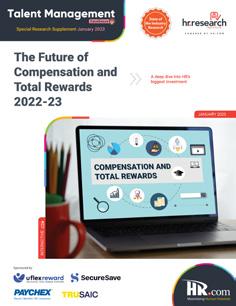

JANUARY 2023 • Vol. 10 • No.01 (ISSN 2564-1972) Themed Edition on The Future of Compensation and Total Rewards The Future of Compensation and Total Rewards 2022-23 Page 15 - 40 Sponsored by TOTAL REWARDS HOLDS AN EXCITING ROLE IN THE FUTURE OF WORK
Jesse Meschuk, Senior Advisor, Exequity
-





















































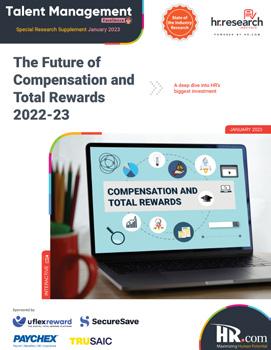
07 INDEX On the Cover Articles Talent Management Excellence JANUARY 2023 Vol.10 No.01 Total Rewards Holds An Exciting Role In The Future Of Work 3 trends and resulting implications for the total rewards profession - Jesse Meschuk, Senior Advisor, Exequity 45 Everyone’s Talking About Problems In The Workforce, But No One’s Discussing The Solution That’s Right In Front Of Us The far-reaching advantages of flexible work - Kevin Akeroyd, Chief Executive Officer, Magnit 49 10 Reasons Why Focusing On Equality Is Crucial In 2023 Change the trajectory for the working year ahead - Thom Dennis, CEO, Serenity in Leadership 57 HR Memo To Professionals: Build A Professional Network 3 ways HR managers can describe how a professional network can be an essential help - Shawn Herrera, Director, Corporate Relations, Pepperdine Graziadio Business School (ISSN 2564-1972) 13 2023 Technology And Workplace Predictions 4 trends to play out in 2023, all of which might just defy conventional wisdom - Jeetu Patel, Executive Vice President and General Manager, Cisco The Future of Compensation and Total Rewards 2022-23 Page 15 - 40 Themed Edition on The Future of Compensation and Total Rewards
4 Emerging Compensation Trends
Talent Leaders Can’t Afford To Ignore
In 2023, talent leaders will take on a greater role in understanding and shaping compensation strategies
- Jafar Owainati, Co-founder and CEO, Barley
On-Demand Pay Benefits
All Income Levels
Helping employees work toward financial wellness should be top of mind for HR professionals
- Brian Brinkley, CEO, QRails
Three Reasons Why CFOs Must Focus On People In 2023



Companies need to plan ahead and invest wisely in their people
- Ian Cook, Speaker, Executive Leader, Visier
Workers’ Comp For Digital Nomads
Are you legally required to provide workers’ comp coverage for digital nomads?
- Craig Shapiro, Vice President, Product & Underwriting, Cerity

Top Picks 10 42 47 54
INDEX
How are our Talent Management Products and Services helping to make you smarter?

Talent Management Excellence - Monthly Interactive Learning Journal
This monthly interactive learning experience captures key metrics and actionable items and keeps you focused on your Talent Management Needs.
Talent Management Webcasts for Credit
Talent Management Virtual Events
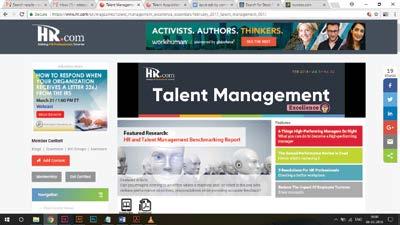
Talent Management Virtual Events will help individuals who deal with the different areas in talent management get a better understanding of the big picture of their organization. Manage performance and talent effectively by studying topics from compensation and incentives, technologies, and compliance to managing and tracking performance of an organization, a department, employee, or even the processes to build a product or service. Each Virtual Event consists of up to 10 credit webcasts.
HR.com webcasts deliver the latest Talent Management industry news, research trends, best practices and case studies directly to your desktop. Webcasts are available live online with a downloadable podcast and a copy of the slides (PDF) available before and after each webcast. Earn all of the required recertification credits for aPHR, PHR, SPHR, GPHR, and SHRM Certifications. HR.com’s one-hour webcasts, in every HR specialty including Talent Management, are pre-approved for HRCI and SHRM credit (excluding Demo webcasts).
Talent Management Community
Join almost 120,000 HR.com members with a similar interest and focus in the Talent Management Community. Share content and download research reports, blogs, and articles, network, and “follow” peers and have them “follow” you in a social network platform to communicate regularly and stay on top of the latest updates. This well established Talent Management Community is an invaluable resource for any HR professional or manager.
Use these invaluable Talent Management resources today! For more information phone: 1.877.472.6648 | email: sales@hr.com | www.hr.com
Debbie Mcgrath Publisher, HR.com
 Babitha Balakrishnan Editor, Talent Management Excellence
Babitha Balakrishnan Editor, Talent Management Excellence

The last three years have significantly shifted workforce expectations and employee-employer relationships. As per experts, the next 10 years may bring more change and evolution than the last several decades. Understanding and addressing employee needs can help enhance your employee experience and limit unhealthy turnover. Although factors such as work-life balance are important, poor compensation and total rewards offerings may nudge a current employee to leave and prospective employees to pass on an organization.
While a well-designed compensation and rewards system can improve employee engagement, satisfaction, and productivity, poorly designed systems can result in dissatisfaction and complaints of unfairness and loss of morale. To learn more about the current and future state of compensation and rewards and their effect on employee retention, the HR Research Institute recently conducted a study, The Future of Compensation and Total Rewards 2022-23. Check out the research summary of findings and download the complete report below to gain insights into the current and future state of HR.
Keeping compensation and total rewards strategies up to date is important, and many are redesigning their programs. Total rewards have a much more strategic function today compared to their original “payroll” roots, and are charged with helping drive the attraction and retention of talent. Exequity’s Jesse Meschuk in his article, Total Rewards Holds An Exciting Role In The Future of Work, shares 3 trends and resulting implications for the total rewards sector.
In 2023, talent leaders will take on a greater role in understanding and shaping compensation
strategies, according to Barley's Jafar Owainati. In his article, 4 Emerging Compensation Trends Talent Leaders Can’t Afford To Ignore, Jafar shares why talent leaders need to be proactive about leveling up their compensation knowledge to meet the changing expectations of candidates and the strategic goals of the business.
In today’s on-demand society, the manner and frequency in which people are paid have not kept up with the times. This is something HR should strongly consider exploring and updating, as upgrading to a more flexible payroll process not only helps employees’ financial health but helps employers attract and retain the best talent. In his article, On-Demand Pay Benefits All Income Levels, QRails' Brian Brinkley discusses why helping employees work toward financial wellness should be top of mind for HR professionals.
In brief, having a comprehensive and attractive compensation and benefits package is vital to keeping your workforce motivated. Organizations must implement innovative strategies to give their current compensation and benefits packages a major overhaul to stay competitive in 2023.
Disclaimer: The views, information, or opinions expressed in the Excellence ePublications are solely those of the authors and do not necessarily represent those of HR.com and its employees. Under no circumstances shall HR.com or its partners or affiliates be responsible or liable for any indirect or incidental damages arising out of these opinions and content.
EDITOR’S NOTE
you
the articles
this issue informative
your
We hope
find
in
and helpful and, as always, we welcome
valuable feedback and suggestions. Happy Reading!
Subscribe now for $99 / year And get this magazine delivered to your inbox every month Become a Member Today to get it FREE! SIGN UP OR For Advertising Opportunities, email: sales@hr.com Copyright © 2023 HR.com. No part of this publication may be reproduced or transmitted in any form without written permission from the publisher. Quotations must be credited.
Our mission is to promote personal and professional development based on constructive values, sound ethics, and timeless principles. Excellence Publications Debbie McGrath CEO, HR.com - Publisher Sue Kelley Director (Product, Marketing, and Research) Babitha Balakrishnan and Deepa Damodaran Excellence Publications Managers and Editors Talent Management Excellence (ISSN 2564-1972) Babitha Balakrishnan Editor Arun Kumar R Design and Layout (Digital Magazine) Vibha Kini Magazine (Online Version) Submissions & Correspondence Please send any correspondence, articles, letters to the editor, and requests to reprint, republish, or excerpt articles to ePubEditors@hr.com For customer service, or information on products and services, call 1-877-472-6648 Talent Management Excellence is published monthly by HR.com Limited, 56 Malone Road, Jacksons Point, Ontario L0E 1L0 Internet Address: www.hr.com Write to the Editor at ePubEditors@hr.com
Supercharge Your Compensation and Total Reward Strategies for 2023
Editorial Purpose
In a world of unparalleled challenges (global pandemic, racial injustice, political rivalry, digital 4.0, emotional malaise), uncertainty reigns. Finding opportunity in this context requires harnessing uncertainty and harnessing starts with reliable, valid, timely, and useful information. The Excellence publications are a superb source of such information. The authors provide insights with impact that will guide thought and action.
Dave Ulrich
Rensis Likert Professor, Ross School of Business, University of Michigan Partner, The RBL Group

I have really enjoyed both reading and contributing to HR.com’s magazines over the past year. As a scholar-practitioner, it has been a wonderful outlet to share my current academic research with a broader practitioner audience, in a very timely manner. If you want to reskill and upskill your workforce, point them towards the wide array of offerings from HR.com.
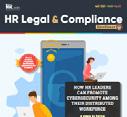

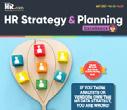
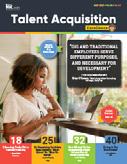

Jonathan H. Westover, Ph.D., MPA, SFHEA, AFCIPD


Chair/Professor | Organizational Leadership Academic Director | Center for Social Impact Faculty Fellow | Center for the Study of Ethics Utah Valley University
During the COVID pandemic, I have learned that I need a source that provides high-quality, cutting-edge, and timely information on a wide-variety of topics. HR.com’s Excellence Publications has been that source for me.
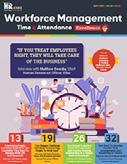
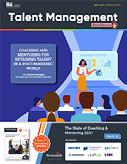
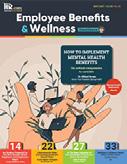
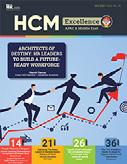


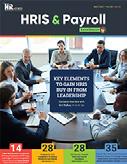
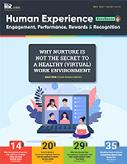 Ryan Gottfredson, Ph.D.
Ryan Gottfredson, Ph.D.
Consultant/Trainer/Speaker/Coach Assistant Professor - California State U. Fullerton
Talent Management Excellence presented by HR.com JANUARY 2023 6 Submit Your Articles
We’re eager to hear your feedback on our magazines. Let us know your thoughts at ePubEditors@hr.com WHY EXCELLENCE PUBLICATIONS?
Total Rewards Holds An Exciting Role In The Future Of Work
3 trends and resulting implications for the total rewards profession
 By Jesse Meschuk, Exequity
By Jesse Meschuk, Exequity
Total rewards has a much more strategic function today compared to its original “payroll” roots, charged with helping drive the attraction and retention of talent through effective and efficient delivery of cash compensation, incentives, benefits, and recognition programs.
Technology and capability improvements already underway suggest the next 10 years may bring more change and evolution than the last several decades. Here are three trends and resulting implications for the total rewards profession:
1. Pay Transparency and Pay Equity
On January 1, California joined New York City, Colorado, Seattle and many other governments in the escalating trend of bringing further transparency to salary ranges for candidates and
employees. More states and regions (including the entire European Union) will begin enacting similar laws.
Additionally, the trend of employees and other stakeholders (e.g., such as LinkedIn, Glassdoor, and salary.com) allowing self-reporting and aggregation of
compensation data will continue. At no point in history has a potential or current employee had more insight into the “market rate” for their compensation, which will, in turn, shift more power to employees and create more pressure to provide equitable compensation for similar roles and responsibilities.
Talent Management Excellence presented by HR.com JANUARY 2023 7 Submit Your Articles
COVER STORY
Implications:
● A need for more insight and consultative guidance to establish and utilize compensation ranges, how to communicate how those ranges were developed, and the philosophy behind the structure. Communication skills, change management, and other traditionally soft skills will become increasingly important in total rewards.










● How to better “value” each individual’s unique contribution will need to be more effectively captured and incorporated into the compensation approach. Tools will emerge and provide suggestions, but this will require the companies to have a more rigorous approach to their job
evaluation practices and force them to think through which responsibilities and skills (beyond traditional “role” definitions) are more or less valued, given their particular business strategy.
● In a world where salary ranges, bonus targets and expected equity grants are transparent, companies will need to effectively capture performance and productivity, and be able to better explain how that impacts and differentiates compensation.
2. Data Analytics













Advanced trends in analytics, machine learning and AI will permeate the total rewards function and help to drive
increased innovation. The more basic “analyst” capabilities will increasingly be handled by programming and automated services, including traditional benchmarking activities, pay equity analysis, and job valuation ― all done in real-time.









Implications:



● These new analytical capabilities will provide increased insight for teams that develop new and innovative ways to capture performance, productivity, and competencies that can predict potentials like learning agility and resilience. The best total rewards teams will partner closely with their HRIS and People Analytics teams to utilize this information.






Talent Management Excellence presented by HR.com JANUARY 2023 8 Submit Your Articles
Total Rewards Holds An Exciting Role In The Future Of Work
● As analytical capabilities become more and more sophisticated, total rewards teams will increasingly be asked by business teams for advice on better, more objective ways to measure and analyze performance. This means, methods traditionally observed by scientific research teams will increasingly find their way into total rewards.

● As the focus for total rewards shifts from the analyst function into the research arena, increasingly, those with skills in data science, behavioral science, and game theory will be in more demand.
3. Personalization
A number of converging trends suggest the future of both compensation structures and benefits programs will be personalized based on an individual’s needs, circumstances and responsibilities.
First, flexible and remote work (at least in knowledge roles) will demand strategies relevant to the location in which individuals work. Second, as the economic downturn continues to take hold, companies will be looking to individuals to take on additional, new, or combined responsibilities which will require a more customized way to reward them. Third, the make-up of the workforce continues to shift from one in which a regular, long-term employee is the norm to one in which a myriad of models exist: regular full-time, part-time (including returning retirees, those who just don’t want to work 40 hours for home life or other reasons), contract workers, consultants, or “gig” workers.
Implications:
● Compensation and benefits strategies will need to adapt to properly capture each of the different employee segments and deliver on their needs.
● A localized, personalized strategy will be needed to
ensure offerings are marketcompetitive in the various locations people work.
● Given the sheer number of variations in each employee’s circumstances (location, responsibilities, employee status, family dynamics, etc), companies will increasingly be providing employees choices with regard to their compensation and benefits approach: the degree of risk in their compensation scheme, the focus of benefits spend, and the relative mix of fixed, variable, cash, non-cash, and non-financial rewards may all vary to a certain degree to help employees to manage their own rewards profile effectively.
This presents an exciting, dynamic time for the total rewards field, which may help shape the future of work for a number of years to come.
Would you like to comment?
Talent Management Excellence presented by HR.com JANUARY 2023 9 Submit Your Articles
Jesse Meschuk is a career and human resources expert, and a Senior Advisor with Exequity. Jesse has more than 20 years of consulting and human resources experience and has worked across various industries including technology, entertainment, gaming, retail, hospitality, manufacturing, and sports. Jesse’s work has spanned the Americas, Europe and Asia.
Total Rewards Holds An Exciting Role In The Future Of Work
4 Emerging Compensation Trends Talent Leaders Can’t Afford To Ignore
In 2023, talent leaders will take on a greater role in understanding and shaping compensation strategies
By Jafar Owainati, Barley
As we enter 2023, economic instability and shifts in the job market, combined with new pay transparency legislation, will make it more important than ever for talent leaders to think strategically about compensation.
Candidates are more educated about compensation, especially in a world where pay transparency is top of mind and remote workers have different expectations
about flexibility and benefits. At the same time, WTW predicts U.S. salary increases will rise to 4.6% in 2023, up from 4.2% in 2022 and the largest increase in approximately 20 years, as companies grapple with mixed economic signals and wage pressures.

With so much uncertainty in the job market, talent leaders need to be proactive about leveling up their compensation knowledge to meet the changing expectations of candidates and the strategic goals of the business. By getting in front of the following four trends in the world of compensation, talent leaders can better position themselves and their organizations for success.
1. Pay transparency creates the need for more nuanced compensation discussions
Pay transparency legislation will significantly impact the way talent acquisition teams talk about compensation. New laws requiring companies to disclose salary ranges on job postings have already come into effect in states like New York and California and are setting the stage for more pay transparency across North America.
Talent Management Excellence presented by HR.com JANUARY 2023 10 Submit Your Articles
TOP PICK
One of the key challenges is that the salary ranges shared on job postings are often very wide. There can be good reasons for this. For example, a company may be open to hiring at the junior or intermediate level for a given role, so the posted salary range actually reflects two internal ranges combined. Another reason could be that salary ranges tend to get wider as the position gets more senior. Companies may also be posting wide ranges thinking that this approach avoids having jobseekers disqualify themselves before even applying based on the salary alone. But all of this can lead to confusion for candidates who will immediately have questions about why the ranges are so broad and what criteria determine their actual offer.
In practice, the rise of pay transparency legislation means talent leaders need to prepare their teams to have more nuanced compensation conversations with candidates. Since candidates will already know the salary range going in, talent acquisition must become fluent in explaining their organization’s compensation philosophy, particularly the factors taken into consideration when making an offer. By clearly explaining the nuances of compensation to candidates, talent teams can build trust early in the hiring process, creating a great candidate experience that ultimately improves the likelihood of winning top talent.
and how those expectations compare to a company’s salary ranges. This can be particularly useful when interviewing a range of candidates with different salary histories and perspectives, such as those who have been laid off from larger tech companies and are now applying to smaller startups.
This data can help HR and executive teams make more informed decisions about how to structure compensation packages to be competitive and land top candidates in a rapidly changing job market.
3. Benefits, equity, and perks become crucial differentiators at the offer stage
As the cost-of-living creeps upward, many organizations are facing the challenge that salaries are not keeping up with inflation. In these circumstances, it becomes increasingly important for talent teams to help candidates understand the full value of their total rewards package and employer value proposition (EVP).
Talent teams have a real-time view of how the job market is shifting, which is a perspective that no one else in the company has. One powerful trend for 2023 is that talent leaders are finding ways to share their perspectives on compensation, backed up by data, with their HR and executive teams.
One way they are going about this is by collecting, aggregating and sharing salary expectations from the candidates they’re interviewing. By gathering this information and looking at it in aggregate for a particular role or region, it’s possible to better understand what candidates are expecting to earn
While salary is an important component, it is far from being the only motivation for a candidate to accept a job offer. Total rewards refer to the complete package of compensation and benefits that a company offers, including bonuses, health insurance and other perks. It also includes equity, stock options and profit-sharing plans. An EVP summarizes the unique set of opportunities an organization offers to its employees, such as its culture, values and work environment. Candidates are often focused on base salary, and don’t realize the value of the equity being offered, the opportunities for growth and all the other components that boost the total compensation of an offer.
Talent leaders who are skilled at selling the story of the unique benefits of their organization will have an advantage in attracting top talent, even if the salary may not be as high as other offers. By highlighting the full value of the company’s total rewards package and EVP, talent leaders can help candidates understand the complete picture of what your organization has to offer.
Talent Management Excellence
JANUARY 2023 11 Submit Your Articles
presented by HR.com
2. Talent teams play a bigger role in helping HR make better compensation decisions
4 Emerging Compensation Trends Talent Leaders Can’t Afford To Ignore
4. More companies making non-negotiable job offers
There is a growing trend in the world of compensation towards non-negotiable job offers: offering a competitive salary and benefits package that cannot be negotiated by the candidate. This approach can have a positive impact on a company’s pay equity and pay transparency, but it can also be challenging for talent leaders to navigate in a world where salary negotiations and competing job offers are the norms.
At the heart of this movement is an increased focus on internal equity, which is the concept of keeping pay fair and consistent within an organization. Research shows that systemic bias prevents women and people of color from negotiating job offers as often or as successfully as white men, so pay gaps are often created at the offer stage. With rising inflation and a competitive job market, new job offers are often higher than the internal salaries for the same role. Also, with new pay transparency legislation, employees have visibility into the salary range being offered for jobs similar to theirs at your company and at others. All of these forces put a new focus on the importance of making sure that pay is structured consistently.
Non-negotiable job offers are one solution that is currently gaining traction. However, for cases where
this strategy isn’t practical, there are other ways to improve internal equity, such as building a strong framework for formulating initial offers and creating guardrails to make sure salary negotiations do not exceed a set salary range.
As 2023 unfolds, talent leaders will take on a greater role in understanding and shaping compensation strategies. Getting ahead of these four trends will make them better positioned to win candidates, keep their top performers, and serve as strategic partners to the rest of the HR and executive teams.

Jafar Owainati is the Co-founder and CEO of Barley, a compensation management software that makes it easy to structure, analyze, and manage pay - and keep a pulse on changing salary trends in the market. In the CEO role, Jafar is responsible for driving the company’s overall direction and strategic growth, as well as overseeing day-to-day operations

Talent Management Excellence presented by HR.com JANUARY 2023 12 Submit Your Articles
4 Emerging Compensation Trends Talent Leaders Can’t Afford To Ignore
Would you like to comment?
2023 Technology And Workplace Predictions
4 trends to play out in 2023, all of which might just defy conventional wisdom
By Jeetu Patel, Cisco
Predicting
the unexpected is a tricky business. Especially in technology and business, where constant change and disruption are a given. But that won’t stop me. So, here are four trends that I expect to play out in 2023—all of which might just defy conventional wisdom.
Beyond the Age of Malware: From Detection to Prediction
In 2023, we will move beyond the age of simple malware because just detecting malicious code won’t be enough to combat the sophistication of current threat actors (who use modern ‘toolkits’
consisting of modular malware). The next evolution of security is about sensing anomalies and behavior patterns, which will aid in predicting a breach. Advances in AI and machine learning will make this possible, and smart organizations will get ahead of this trend.
Talent Management Excellence presented by HR.com JANUARY 2023 13 Submit Your Articles
The Next Critical Influencer for Technology Purchases? Human Resources
Hybrid work has changed so many dynamics within an organization, including buying patterns. Human resources (HR) has traditionally focused on work-related software like Workday, but with hybrid work so essential to productivity and worker satisfaction, HR will continue to get more involved in technology software influencing. In 2023, look for HR to expand its knowledge of and influence in all kinds of technology and software purchases.
Choice Over Mandates Will Matter More Than We Think
Another disruption to hybrid work will be the countless employees who will not want to go back to
rigid, in-office work schedules. Many organizations may choose to double-down on workplace mandates in 2023, but they’ll ultimately lose. Progressive companies will create a flexible, secure hybrid-work experience and a great physical workspace — that people will want to visit, but only when they choose to or the work calls for it. Such organizations will win on talent, agility, sustainability, and worker satisfaction and see long-term success.
An Uptick of Technological and Ethical Dilemmas with Transformative AI
AI and machine learning have pretty much stuck to relatively rote (but helpful!) tasks. We’ve already seen mind-blowing capabilities from DALL-E, for example, and



in 2023, there’s no doubt even more truly transformative AI use cases will emerge. The next era of AI, and the use cases that follow, will have big implications in 2023 and beyond — both good and bad. As AI continues to take over important decision making (such as employee recruitment or deciding who gets approved for loans), bias may become an unfortunate “side effect” of utilizing such technology. Additionally, AI will also enable more advanced scams, incidents of identity theft, convincing deep fakes, and more. Despite the tremendous positive impact AI can have, it’s more critical than ever that the industry ensures responsible and ethical use cases, guidelines are implemented, and, when appropriate, restrictions win out.
Jeetu Patel is Cisco’s Executive Vice President and General Manager of Security and Collaboration. Jeetu combines a bold vision, steeped in product design and development expertise, operational rigor, and innate market understanding to create high-growth Software as a Service (SaaS) businesses. Prior to joining Cisco, Jeetu was the Chief Product Officer (CPO) and Chief Strategy Officer (CSO) at Box, a role he pioneered.
Would you like to comment?

Talent Management Excellence presented by HR.com JANUARY 2023 14 Submit Your Articles
2023 Technology And Workplace Predictions
The Future of Compensation and Total Rewards 2022-23

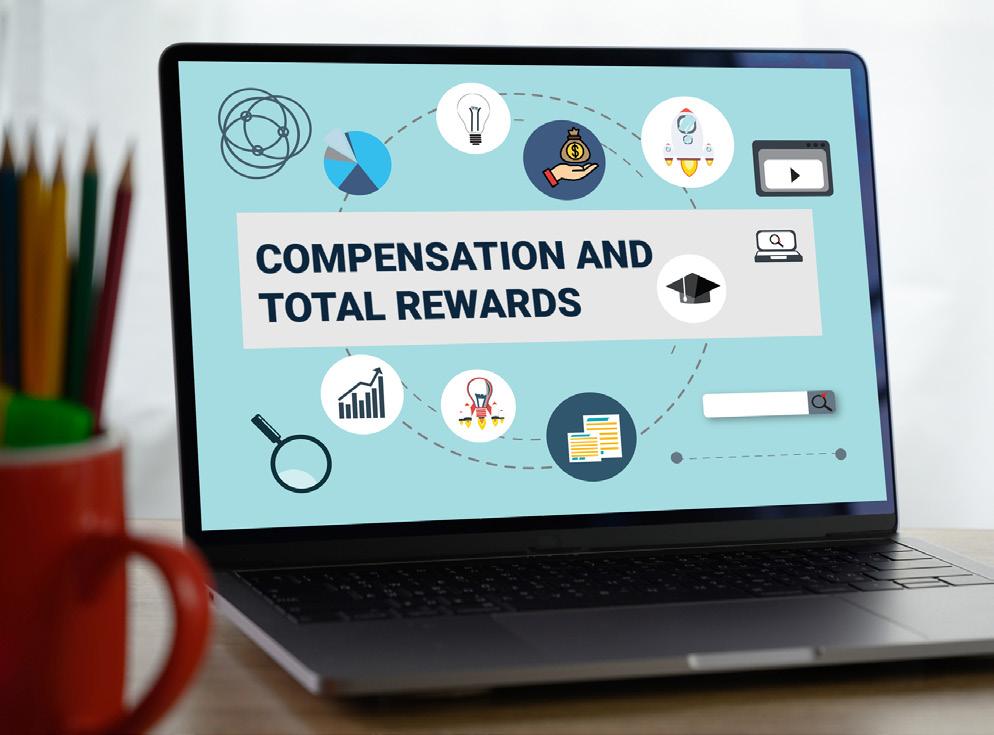
Sponsored
by: A deep dive into HR’s biggest investment
JANUARY 2023 Special Research Supplement January 2023
INTERACTIVE
RESEARCH REPORT SUMMARY
The Future of Compensation and Total Rewards 2022-23 17
Survey conducted by: Sponsored by:
ARTICLES
21
Attracting and Retaining Talent: Four Ways to Set Your Company Apart
By Martina Hopkins and Sarah Williams
25
How to Overcome the Rewards Visibility Problem
Sean Luitjens, uflexreward
HR.com


Why ESAs Are Non-Negotiable in Tough Economic Times 30
34
Addressing Pay Compression to Retain Talent
By
Robert Sheen, Trusaic
Talent Management Excellence presented by
By JANUARY 2023 16 Submit Your Articles
INDEX
The HR Research Institute, powered by HR.com, the world’s largest social network for Human Resources professionals, is a key part of our mandate to inform and educate today’s HR professionals. Over the past three years, the HR Research Institute has produced more than 85 exclusive primary research and state of the industry reports, along with corresponding infographics in many cases, based on the surveys of thousands of HR professionals. Each research report highlights current HR trends, benchmarks, and industry best practices. HR Research Institute Reports and Infographics are available online, and always free, at www.hr.com/featuredresearch
The Future of Compensation and Total Rewards 2022-23
A deep dive into HR’s biggest investment
Compensation and total rewards play an essential role in attracting, retaining and motivating staff. However, they are also difficult to manage because they involve significant challenges in terms of administration, compliance, equity, and managing labor expenses.
To learn about the current and future state of compensation and rewards and their effect on employee retention, HR.com conducted an exclusive research study of HR professionals that looks into what is and isn’t working in this area and develops insights and takeaways to help HR improve their programs for the future.

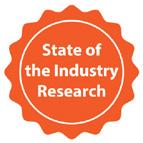
Key Findings
● Stakeholders agree that keeping compensation and total rewards strategy
up-to-date is important, and many are acting on that belief by focusing on redesigning their programs.
● Despite the widely held belief in the importance of compensation and total rewards, many systems remain underdeveloped.
● Compensation and total rewards are focused on the core objectives of attracting and retaining talent.
The Importance of Total Rewards
In most organizations, key stakeholder groups agree that it is important or very important to modify their total rewards approach to today’s fastchanging times.
17 RESEARCH REPORT SUMMARY STATE OF THE INDUSTRY RESEARCH
Exclusive Study By The HR Research Institute
Over 40% of both talent acquisition professionals as well as compensation and benefits professionals say modifying their total rewards strategy is very important
Survey Question: For the following groups of stakeholders, how important is modifying your organization's compensation and total rewards strategy to fit today's changing times? (please provide your best estimate)
18 RESEARCH REPORT SUMMARY STATE OF THE INDUSTRY RESEARCH
0 20 40 60 80 82% 81% 79% 76% 35% 42% 41% 31% 45% 38% 39% 47% Supervisors
managers Compensation
and
and benefits professionals Talent acquisition professionals Senior executives Important Very important
The Redesign of Total Rewards Strategies
Nearly two-thirds of organizations redesigned their total rewards strategy last year, are doing so now, or plan to do so next year. This has likely been spurred by the so-called “great resignation,” the increased demand for talent, the low unemployment rates, and the rise in inflation.
The question for organizations will be how often they need to revisit the reward strategy to keep up with today’s shifting circumstances. It is possible that many organizations will find it necessary to redesign their reward strategy every few years, depending on how much change they face.
The Challenges Faced by Total Rewards
Despite all the changes in strategies and the fact that so many stakeholders attach high importance to total rewards, only a few (7%) respondents describe their total rewards approach as “advanced.” Moreover, 42% view their organizations as only “beginning” or “undeveloped” in terms of their total rewards approach. This means these organizations lack any initiatives focused on equity or performance. Large organizations are far less likely than small or mid-sized ones to have an “undeveloped” or “beginning” approach to compensation rewards. Only 25% of large organizations give themselves these low ratings compared to 51% of mid-sized organizations and 74% of small organizations.
Survey Question: How would you describe your organization's compensation and total rewards approach? (select the one that best applies)
Many organizations (42%) describe the sophistication of their total rewards as “beginning” or “undeveloped”
Undeveloped: Reactive, fragmented, unstandardized approach
Beginning: Approach that structures and standardizes basic elements such as pay ranges for positions
Intermediate: Structured approach that is performance- and pay-equity-focused
Advanced: Structured, agile, equitable, strategically aligned and future-focused with a range of proven rewards
19 RESEARCH REPORT SUMMARY STATE OF THE INDUSTRY RESEARCH
0 10 20 30 40 50 60 12% 30% 52% 7%
Running a total rewards system has many challenges, the most common of which is that their total rewards system is not well understood by employees (cited by 62% of respondents). Other common problems cited by more than 40% of respondents are “not seen as differentiating relative to competitors,” “not agile and flexible to changing business circumstances,” and “not personalized to individual employee needs.”
The Employee Benefits Component
Health and well-being benefits are most widely cited as a way to attract and/or retain key talent. Most organizations (73%) offer flexible work arrangements, and it seems likely that they are here to stay. The pandemic proved many people could successfully work remotely, and flexible work options are now the norm in many organizations. Another potentially pandemic-related benefit is family or personal counseling, which is now offered by nearly 60% of respondents.
The Future of Total Rewards
Four out of five respondents believe compensation and total rewards will become more important over the next two years. There is widespread agreement that compensation and total rewards are becoming more important. Many HR professionals (42%) feel it would become much more important, and a further 38% feel it would become a little more important over the next two years. About one quarter of respondents (24%) say being transparent about pay (sharing who is paid what) will be an important feature of compensation and total rewards.
For key takeaways and recommendations on The Future of Compensation and Total Rewards 2022-23 study, check out the full report.

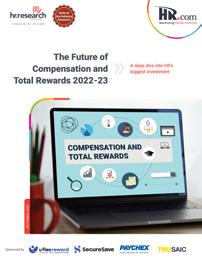
Read the Research Report
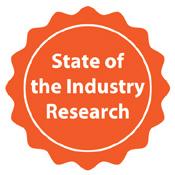
20 RESEARCH REPORT SUMMARY
THE INDUSTRY RESEARCH
STATE OF
Finding and Keeping Talent: Seven Ways to Set Your Company Apart
By Martina Hopkins and Sarah Williams
Market conditions are rocky for most businesses, with rising interest rates, persistent inflation, geopolitical unrest, a looming energy crisis and an economic slowdown on the horizon. The labor market is tight, the concept of “quiet quitting” is real, and it’s tough for employers to get the talent they need to compete.
We recently asked 450 HR and business leaders across the US what they expect to be more challenging for their companies in the year ahead. For the fourth year, the number one issue was “attracting dedicated, capable staff,” followed by “offering competitive compensation and benefits.” So, if these are also your challenges, you’re not alone.
In our experience, having competitive compensation and a robust total rewards offering will set your company apart and enable you to attract and retain top-quality talent in this competitive market. Finding and then keeping employees is an integral part of a business’s ability to grow. Replacing employees can cost the business time, money, and resources if an employee leaves the company, affecting profitability, productivity and morale.
7 Strategies to Retain Employees
1. Offer a competitive benefits package 2. Provide attractive perks 3. Share in the business’s financial success 4. Career advancement opportunities 5. Give employees meaningful work 6. Recognize high-performers 7. Know why employees stay
1. Offer a competitive benefits package
It’s generally considered a “must have”—you can hardly expect to hire and retain quality employees unless you offer a competitive benefits package that includes health, dental, vision and life insurance, and perhaps even retirement savings plans. For example, did you know that 84% of employees say they will stay with an organization that supports their benefits needs?1 In another Paychex study2, our research found that the number of benefits you offer directly correlates with employee satisfaction. Even if employees are not taking advantage of all the benefits offered, those with access to many benefits (i.e., 22 to 24) reported they were satisfied with the benefits. Offering 22 to 24 benefits might seem like a lot, but you may already be offering perks that you don’t currently classify as benefits, such as passes for public transportation, support for mental health wellness, on-site gym etc. Also, the ability to set a flexible schedule or telecommute is a highly valued benefit. Even if employees
84% 1 Paychex Employee Benefits Study, 2020
of employees say they will stay with an organization that supports their benefits needs1
Featured Research Article 26 21
Businesses that see successful employee retention may be those that acknowledge employees have lives outside the company. These employers provide significant workplace perks such as flexible work schedules, telecommuting options, reasonable sick leave policies, and vacation time. More minor extras can also play a role in employee retention, including variations on hosting a complimentary continental breakfast and an occasional all-staff lunch paid for by the company. In either of these examples, it may be beneficial to have management attend and mingle with employees for greater employee access to leaders and gain employee feedback
3. Share in the business’s financial success
Since top-performing employees contribute to the business’s overall success, shouldn’t they be permitted to share in the financial rewards? For example, consider rewarding workers with an annual raise and issuing stock options or similar rewards. This approach can encourage employee commitment to your revenue and profit objectives and a financial incentive to “stick around” as the business grows.
5
Provide career advancement opportunities
A good employee generally wishes to advance their career within the company. Limited internal opportunities may discourage these employees from staying. Consider opportunities to promote from within in your efforts to inspire others on the team to work towards the same goal.
And when an employee is promoted, make a big deal in communicating that person’s success. Additional Paychex research found that employers undervalue the importance of clear career opportunities for employee progression. Forty-one percent of employees said they are considering leaving their current company to increase their opportunities for career progression.
5. Give employees meaningful work
Doing the same things over and over again can be a workplace morale-buster. Your employees may appreciate the chance to try something new and more challenging as part of their responsibilities. Plus, your business may benefit from applying their knowledge and experience to new job duties. Look for opportunities to challenge your workers wherever you can.

2 6 Things Businesses Get
2022 3 Paychex
2020
Wrong When It Comes to Attracting and Retaining Talent,
Employee Benefits Study,
55% 41% 32% 30% 18%
3 Featured Research Article 27 22
Top
Reasons employees give for why they are leaving their company
6. Recognize high-performers
Everyone likes to be recognized for their contributions, but business owners often fail to take the time to do so. For example, it can start with a simple “thank you” for a job well done up to publicly acknowledging an employee’s role in a successful business initiative.
7. Know why employees stay
Most companies conduct exit interviews with departing employees. So why not occasionally talk with your most valued workers and find out why they choose to stay? The answers they provide—about management styles, working conditions, maybe even things they’d like to see improved—can help you refine a more effective employee retention strategy for the rest of the workforce.

At Paychex, in addition to the general HR advice we provide our clients, our expertise is in helping companies offer competitive benefits offerings so they can level the playing field with much larger companies, even those at Fortune 500 firms.
Turnover can be expensive, time-consuming, and stressful. And the process of finding and keeping talent can take your focus away from managing your day-to-day business, ultimately resulting in lost productivity and revenue.
We can also help you to offer robust, flexible, personalized and affordable benefits to set your company apart in this competitive talent market. Paychex is here to help.
Paving the Way Forward
Is your business at risk of losing good people? Or are you struggling to attract the talent you need to hire to fill current and future business needs?

Martina Hopkins is Senior Region Manager with Paychex. With over 25 years of senior management experience in operations leadership, Martina currently leads a team of 90+ HR Professionals that service over 5,000 Paychex clients in the Eastern region of the US. She holds a Masters's in Leadership Science from Nova Southeastern University.
Sarah Williams is Senior Manager, PEO Service with Paychex. Sarah leads the East region of benefits professionals to achieve best-in-class service for our PEO clients and their employees. She focuses on providing clients the freedom to succeed through retaining top talent with our robust benefits offering.

Featured Research Article 28 Simple Customized Valued Competitive Affordable Flexible Download the Checklist Get the Checklist: What to Look for In An Employee Benefits Provider Compare your benefits with those from Paychex to ensure you’re putting your best employee experience forward in this competitive talent market. Are the employee benefits you offer:
23
• • •
Make it simple to find and keep your dream team
Finding and keeping talent is one of the top challenges business leaders expect to face in 2023.1 Replacing an employee can be expensive, time-consuming, and disruptive to workflows and client services. Paychex HR can be your secret weapon to attract the people you need and give your top talent more reasons to stay with more competitive benefits, training and development, and more.

Get Started 1 2023 Priorities for Business Leaders, Paychex © 2022 Paychex Inc. All Rights Reserved. www.paychex.com 1628250 | 01/10/23
How to Overcome the Rewards Visibility Problem

 AUTHOR: SEAN LUITJENS
AUTHOR: SEAN LUITJENS
Despite running complex and generous reward programs, many enterprises don’t have a unified view of their total rewards strategy. Instead, they suffer a piecemeal landscape where different tools and systems are responsible for different rewards.
The result is a lack of visibility into the largest expense in the organization. But that’s not the only problem. A lack of visibility also limits the insights HR leaders can generate from their rewards program — and that can directly hamper other initiatives.
Total rewards directly impact several HR policies, says Jill Krumholz, co-owner and managing partner at RealHR Solutions. That includes recruitment, performance, recognition and DEI initiatives. Without better visibility into total rewards, these initiatives can suffer. Leverage a total rewards platform that offers granular insights, however, and CHROs can carry out big-picture leadership initiatives in the following ways.

Copyright ©2022 uFlexReward
www.uflexreward.com
Reduce the Pay Gap and Create a More Equitable Company

A lot of factors or pay policies determine an employee’s salary, like seniority, education and location. Yet the extent to which these factors affect the final salary is often opaque and subject to interpretation. This leaves the door open for bias and inconsistent application, which, in turn, creates unintended pay gaps.
Women and ethnic minorities suffer in particular. Research collated by Lean In, a global community to help women advance in the workplace, shows women in the U.S. earn 20 percent less than men on average. Black women are paid 38 percent less than white men and Latinas are paid 47 percent less. That sees women lose out on more than $400,000 throughout their careers.
Closing the gap is essential to creating a diverse and equitable workplace. But it’s also good for your company’s bottom line, says Maya Raghu, the deputy director of policy at the Office of Federal Contract Compliance Programs at the U.S. Department of Labor. Companies lose out on talent when women feel they are treated unfairly and see no room for improvement.
Improving your total rewards visibility can help you identify and eliminate pay gaps and other forms of inequality. When you can see the total value of rewards for employees across the company, it becomes easy to find discrepancies between different genders and ethnic groups — even if salaries are largely the same.
At the same time, the platform that gives you greater visibility into total rewards can also help you communicate rewards more effectively to employees. Giving employees a clear view of how they are rewarded and, possibly, how that compares to others in the company, can reassure employees that they are valued equally.
Better visibility into rewards data also allows companies to confidently disclose gender pay gap data — something most companies aren’t doing. The nonprofit Just Capital found less than onequarter of major U.S. companies disclosed whether they conducted a pay gap analysis, with only 75 of the 954 companies in the study reporting exact pay ratios between men and women.
Copyright ©2022 uFlexReward
www.uflexreward.com
Identify Unmet Needs and Increase Employee Engagement
Are you offering employees all they need in their rewards package? Even if surveys come back positively, employees may not be telling your HR team the whole story. But getting a granular look at the impact and uptake of rewards in the form of analytics provides a data-backed view that allows you to optimize your reward strategy for the benefit of both employees and the company.
Optimizing rewards is particularly vital to win the war on talent. “Getting total rewards right can mean the difference between competing effectively in the global talent marketplace and being left behind,” writes Nick Lynn, a senior director of employee experience and engagement at WTW. “A consumer-grade total rewards portfolio of pay, benefits, wellbeing and career programmes serves as a catalyst, driving attraction, retention and engagement of talent essential to business success. Yet, in many organisations, total rewards are not evolving quickly enough to keep pace with changes in the world of work.”
It’s also vital to get the most from your team right now. Keith Reynolds, HR vice president of total rewards at PepsiCo encourages HR teams to ask: “How do we create a compensation and benefits programs that can help us to attract the right talent, retain that talent, and help to engage that talent now and in the future?”
Using insights gathered from a unified view of total rewards, your HR team can create new rewards that meet the specific needs of employees. PwC’s Andrew Curcio and Alastair Woods note that understanding an employee’s life stage and career aspirations are vital when doing so.
“Understanding these drivers for each employee should inform the new ways of rewarding people, with more focus on learning, mentoring, career development, and well-being than on financial reward,” Curcio and Woods write. “Customization is challenging, as the added complexity generally costs more. We have found the best path to improved business performance is to apply an 80/20 rule: maintain 80% of the current offering (albeit streamlined and simplified) and redesign 20%.”

Copyright ©2022 uFlexReward www.uflexreward.com
Rewards Visibility Helps Optimize and Model Employee Costs
Rewards are one of the biggest expenses in the company. Given recent economic concerns and predictions of a recession, getting on top of those costs is more important than ever. One of the easiest ways to do so is to eliminate or reduce the rewards that data shows employees don’t value.

But that’s just the tip of the iceberg. You can also identify how reward costs impact the business as a whole.

For instance, Mercer found that a “good salary” at one company decreased the likelihood of turnover by three percent. On the other hand, a promotion increased turnover by 12%. “People who were promoted found themselves with more responsibilities but inadequate training to manage heightened expectations. Without sufficient support, movement between jobs or departments had actually become a more critical push factor than pay levels,” explain Mercer’s Brian Levine, Ph.D. and Lauren Mason. Spending more on employees by promoting them was actually costing the company in the long run. Further, you can use data to model a range of potential reward-related scenarios like how new hire packages, promotions, organizational restructuring and expatriate assignments impact costs. When pursestrings are being tightened, this kind of accurate analysis can allow HR teams meet their own budget requirements while also helping to guide the company through a potentially stormy economic period.
Ultimately, your company’s total rewards package plays a bigger role on HR initiatives than you might think. And getting detailed analysis of your rewards initiative is much more than just counting the cost. When you see all your rewards data in one place, you get the kind of actionable insights that let you bring about real, people-focused change in your organization — the kind of big picture leadership every CHRO strives to achieve.
www.uflexreward.com
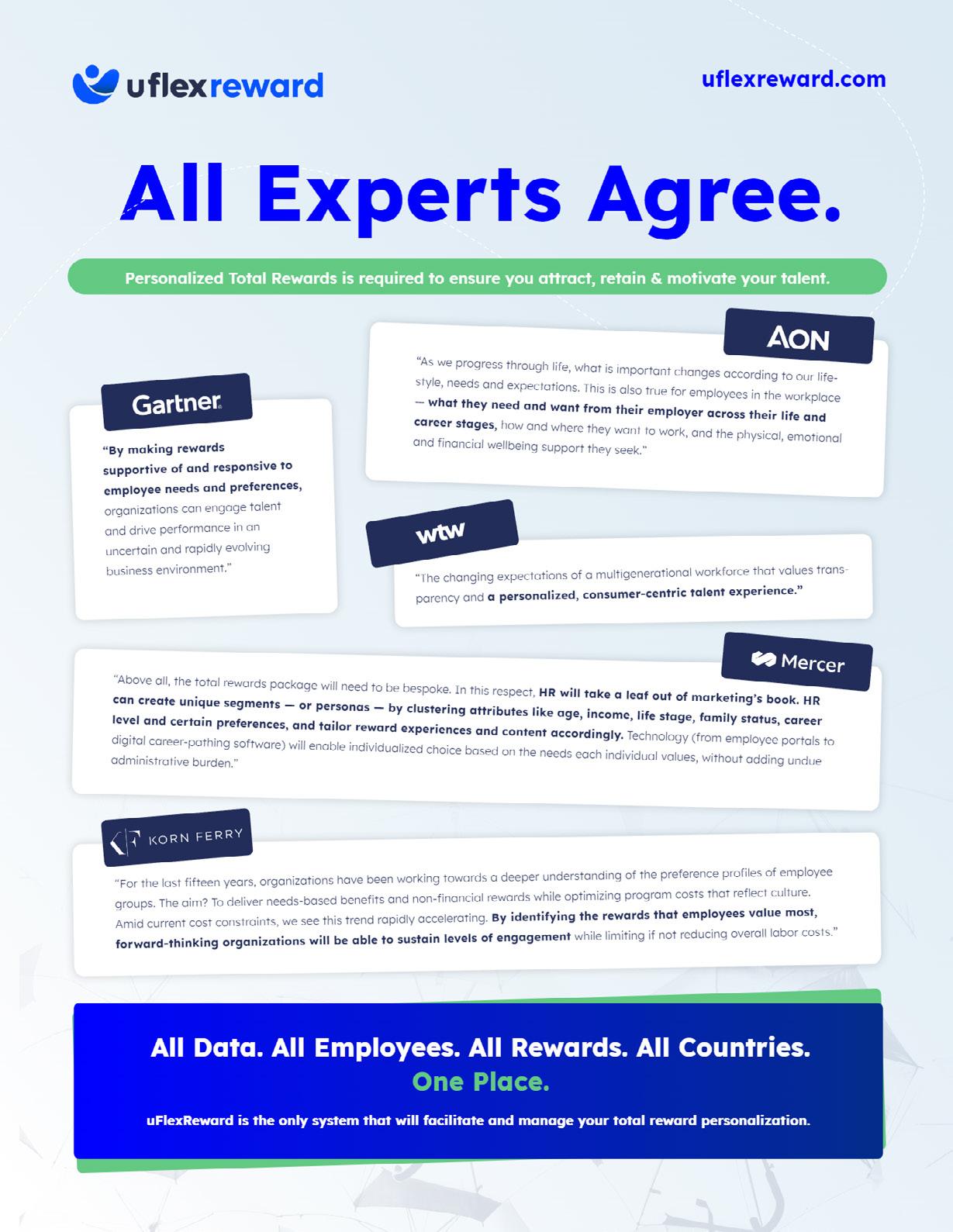
Why ESAs Are Non-Negotiable in Tough Economic Times
With stock market volatility, inflation, and a potential recession on the horizon, many companies are looking to make cuts—but during these uncertain times, it’s employees who suffer.
SecureSave recently conducted a survey to better understand how people are navigating these challenging times and how emergency savings can help. Over 72% of those surveyed were negatively impacted by rising inflation and 37% said financial stress directly impacts their work.



STATE OF THE INDUSTRY RESEARCH 30 ARTICLE
SecureSave
Higher stress levels can lead to decreased employee productivity, engagement, and retention.
Recent research shows that the one benefit employees are asking for most is employersponsored emergency savings accounts (ESAs) — which enable companies to better support their staff while cutting back on budgets.
The Need for Emergency Savings Accounts is Now

Our co-founder, Suze Orman, spoke at a recent event about employee sentiment during current economic uncertainty, “What we’re finding is that credit card debt is up 21% from last year. The savings rate is back to where it was in 2013… Your employees are becoming more and more afraid they won’t have the money to pay their bills.”
When financial times get tough, your employees suffer. They worry about their bills and futures and want to ensure they have an emergency cushion. ESAs help employees feel more secure by giving them a safety net.
As inflation increases and costs go up, employees may need money for emergencies with cash they don’t have. Employers are likelier to see 401(k) loans and hardship withdrawals increase as personal savings levels decrease to the lowest level since the 2008 recession.
Our recent research shows that the most urgent financial priority for people right now— hands-down—is saving for emergencies, which respondents ranked higher than paying down debt and saving for retirement.
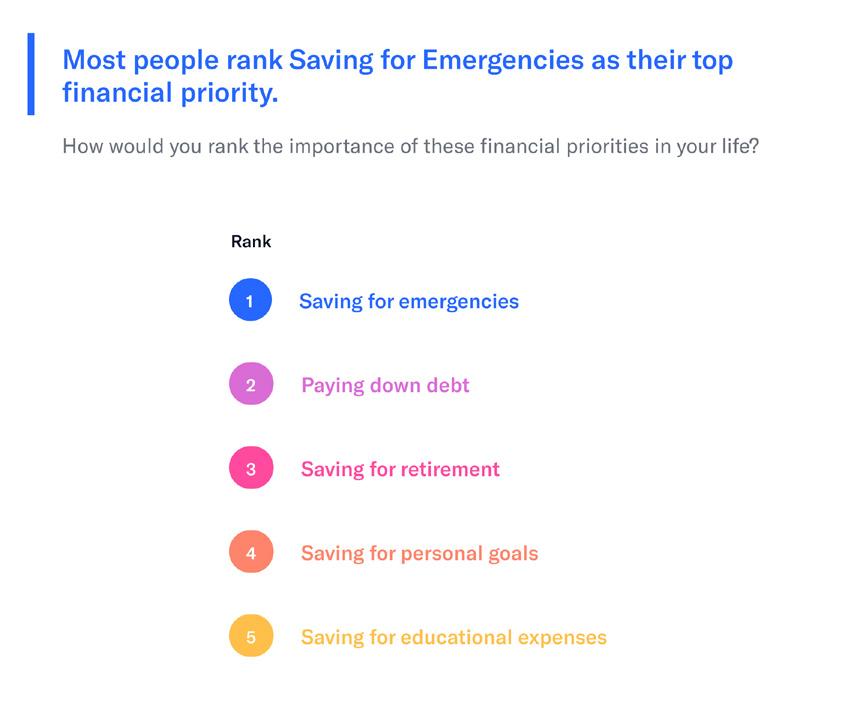
STATE OF THE INDUSTRY RESEARCH 31 ARTICLE
But providing an ESA benefit isn’t just about enabling better economic security and financial wellness for your employees. It’s also critical to improving their emotional wellbeing; 42% of those surveyed indicated that money concerns had a negative impact on their mental health, which can influence work performance. It only makes sense for employers to address this concern head-on.
Efficacy and Cost-Benefit of ESAs
Helping employees navigate financial hardships calls for a more straightforward behavioral solution

than traditional financial wellness programs, which often focus on educational content.
Tangible results are what makes ESAs so effective: employees can start saving immediately and access funds right away. Our research shows more employees would choose an ESA over any other benefit, with 43% of employees selecting ESA as their top choice, versus 15% or lower for other benefits.
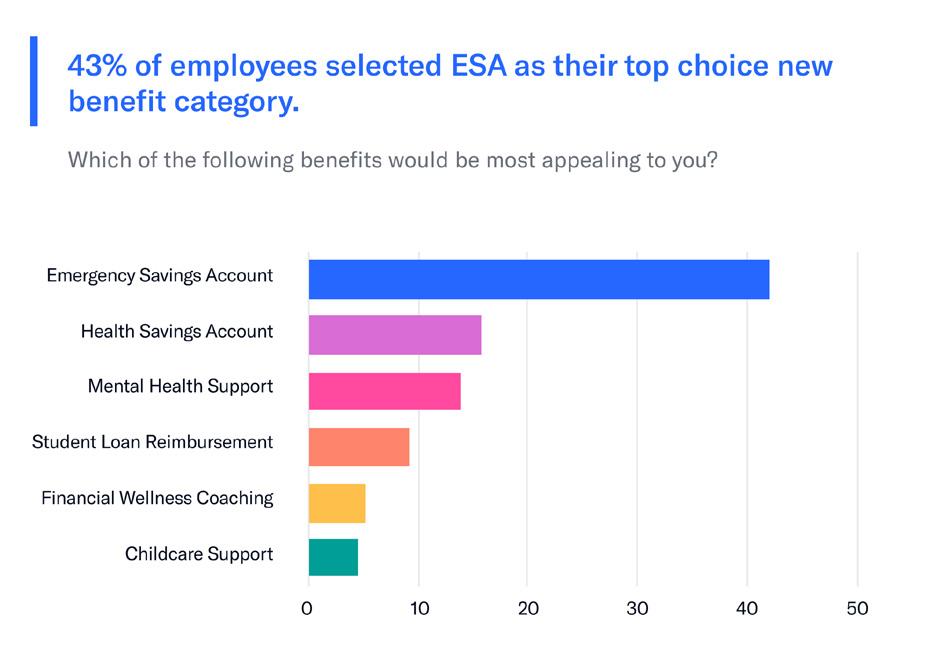
STATE OF THE INDUSTRY RESEARCH 32 ARTICLE
When compared to other popular benefits like a health savings account (HSA) with employer match, student loan payoff, and mental health support, emergency savings accounts with an employer match came out far ahead.
ESAs are not only cost efficient but they can help build trust within an organization. They offer a unique alternative or supplement to other benefits that appeals to leadership and employees alike since it’s simple, low-cost, and easy to use.
Employer-sponsored ESAs are straightforward, so employees are more likely to appreciate their value and trust the benefit as a reliable solution.
Employers can implement a highly engaging financial wellness program that’s simple, costeffective, and directly impacts mental health and financial wellness—by launching an ESA.
How to Accommodate ESAs on a Tight Budget
Despite the clear benefits, the primary concern is how a program like emergency savings can fit into your existing benefits budget.
Companies often offer benefits options that their employees don’t want or aren’t utilizing. Less than 49% of employees take advantage of their existing benefits. Recent research from SHRM found that employers continually underrate stress that comes from financial hardship—even though employees say they want more financial wellness resources.
If you aren’t sure how to fit ESAs into your benefits offering, consider surveying your employees and seeing how they feel about the current benefits lineup—and ask them whether they’re interested in an employer-sponsored ESA.
If you need to, you could reduce benefits that aren’t as in demand and focus instead on offering employees an impactful solution they actually want. Determine which benefits have the lowest utilization rates and eliminate those from your offerings.
With the requisite funds and support from employees, you can explore adding an employeesponsored ESA to your offerings. If you launch this benefit, you’ll not only have happier, healthier employees, but you’ll also have higher engagement, lower turnover, increased productivity, and improved trust in your organization.
To learn more about how you can add an employersponsored ESA to your benefits packages while still reducing your budget, contact SecureSave today.
Would you like to comment?

STATE OF THE INDUSTRY RESEARCH 33 ARTICLE
Addressing Pay Compression to Retain Talent
Robert Sheen, Trusaic
Pay transparency continues to be a focal point this year. With 10 states having implemented salary range requirements for job listings, it’s paramount that employers manage compensation policies and practices that promote fair pay in the workplace.
As organizations incorporate these pay transparency policies, however, they must be mindful of pay compression
Pay compression, also known as wage compression and salary compression, is a pay equity issue that does not account for important factors for paying employees differently, including tenure, experience, skills, performance, and education. It often occurs when new hires and tenured employees performing similar job duties receive close to, or exactly the same, compensation.

Pay compression is usually unintentional, and it can happen for a number of reasons. For example, in an effort to attract talent during an increasingly tight labor market, recruiters and hiring professionals may increase salaries for open job listings. In doing so, it may create an instance of pay compression for current staff.
Instances of pay compression can also happen during the event of an organizational merger or acquisition. Two separate organizations likely possess different pay policies, and when they combine, it’s possible for pay compression to surface.
Pay Compression is on the Rise
Despite employers’ best intentions to promote pay equity, and transparent pay policies, pay compression is unfortunately on the rise. In fact, 56% of organizations reported experiencing pay compression in the last 12 months, according to a survey conducted by talent solutions firm, Robert Half.
Obviously, pay compression poses a serious risk for organizations looking to retain talent during the tightest labor market in decades. Failing to address it can result in recruiting challenges and potential turnover.
Moreover, pay compression can result in significant workforce challenges. Employees that become aware of unfair compensation practices within their organization experience a multitude of negative feelings, including a drop in morale, comradery, and self-worth.
STATE OF THE INDUSTRY RESEARCH 34 ARTICLE
To add to the severity of the situation, when pay compression issues go unchecked for long enough, they can result in legal action. Oftentimes, employees that become aware of pay inequity may attribute it to factors such as gender or race/ ethnicity – and those types of claims can create serious reputational damages for a company, in addition to significant punitive and monetary damages.
Fortunately, pay compression can be solved. Organizations aware of the issue have a multitude of resources for addressing it. According to the report by Robert Half, 62% of organizations are increasing salaries for tenured staff to close wage gaps. This is but one way to help curb instances of pay compression.
Below we dive into specific steps your organization can take to correct as well as prevent future occurrences of pay compression.
Step 1: Review Your Compensation Policy
Organizations eager to achieve pay equity need
to have a great foundation, and that starts with a comprehensive compensation policy.
Review your policy to ensure you have clear salary ranges for departments and job roles. These ranges need to include salary caps – or ceilings that salaries cannot exceed. As recruiters seek out new talent, the salary caps will ensure that new hires are not brought in at a rate that would create pay disparities or instances of pay compression for current employees.

As you ensure equitable salary ranges across your workforce, give special attention to the midpoint for each department and the respective job functions. To calculate the midpoint, you will need both the bottom and top of the respective ranges.
For example, your Client Services Department may have a host of different positions, but the range for each position falls within the pay range of $50,000 and $95,000. To calculate the salary midpoint for the Client Services Department, take the bottom and top figures and divide them by two. Here’s the formula:
STATE OF THE INDUSTRY RESEARCH 35 ARTICLE
Armed with the salary midpoint for the Client Services Department, managers, HR, and recruiting professionals can calculate where their workers fall within the range. And with this information, you can set parameters around where new hires and tenured employees should fall in relation to your established range.
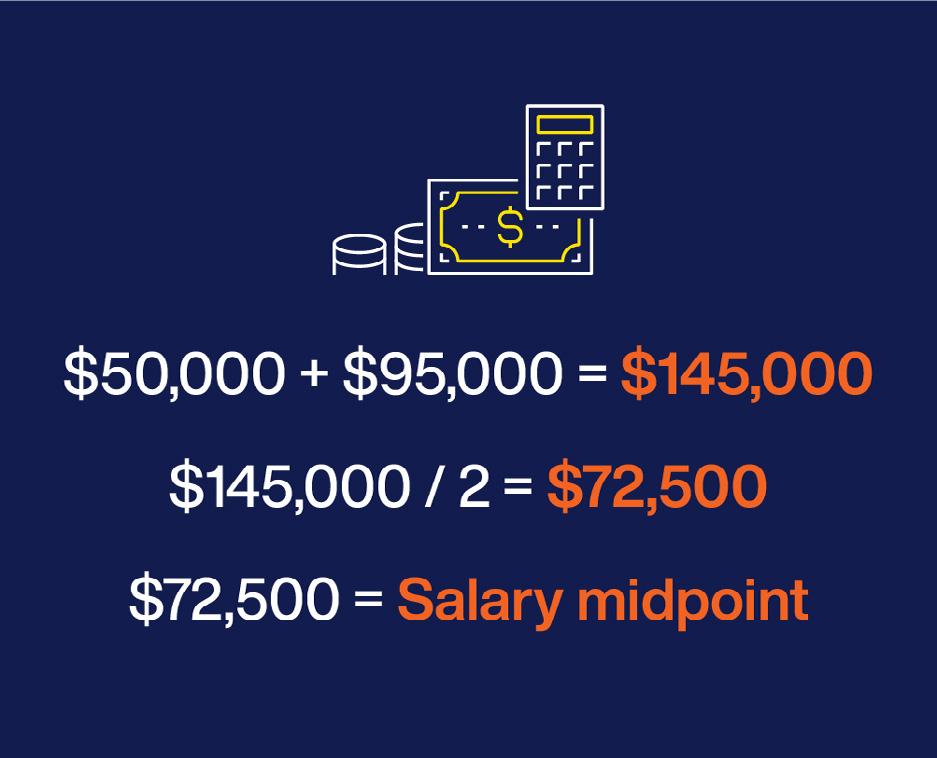
Documenting this information in your pay policy is part of the process, but the policy should also include how to address instances when new or

tenured employees’ compensation doesn’t align with your established ranges. If for example, a tenured employee falls below the salary midpoint range you’ve established, give them a raise to close the gap.
The adjustment in pay may temporarily affect your bottom line, but the increase in salary is a worthy investment for the future of your workforce – and one that will certainly cost less than having to replace them.
STATE OF THE INDUSTRY RESEARCH 36 ARTICLE
Step 2: Compare Policy and Execution
Establishing a compensation policy is one thing, executing that policy is another.
When designing your strategy for employee compensation and benefits, you may determine that your organization compensates 10% for tenure – that is, when accounting for compensation between workers with comparable duties, tenure could make up 10% of the difference in pay.
After reviewing actual salaries for employees of similar job functions, however, you find that you’re actually only attributing 2% of compensation differences to tenure. In situations like this, your pay policy and your compensation efforts are out of alignment.
The gap between your pay plan and actual compensation could be a significant contributing factor to creating instances of pay compression. It’s for this reason that organizations must audit their compensation policy against what’s really happening across their workforce. And if they are not in sync, take action to make sure they are. Issues like these can snowball and turn into serious pay disparities.

Step 3: Conduct a Pay Equity Audit and Adjust
Next, you must understand your pay equity profile on a larger scale. Ensure you have equitable pay practices amongst your entire workforce. Pay equity audit software solutions like PayParity identify pay gaps and pay disparities at the intersection of gender and race/ethnicity.
The results from the pay equity audit can help you identify occurrences of pay compression that exist for what appear to be discriminatory reasons – and taking a proactive approach to addressing these inequities will bode well for your organization’s overall approach to fair pay practices.
Every time a new employee is hired, or an employee leaves, an organization’s pay profile changes – it is for this reason that pay equity audits be conducted with some regularity. And because you want to ensure there is equity across your current staff and the jobs you’re
looking to fill, a pay equity audit can help you understand where gaps exist, where they’re being addressed, and where you need to focus your efforts to prevent future pay discrepancies.
Step 4: Incorporate Equity into Your Pay Ranges
Once you’ve made pay equity auditing a part of your compensation policy, you need to act on the findings discovered. If pay disparities exist for any unexplained reason, correct them and ensure your established internal pay ranges are reflective of any pay changes you make. This will prevent pay compression from occurring down the line.
These established, verified, and equitable salary ranges will account for your current staff and how much they earn. With this information clearly documented and shared, your hiring staff will be able to recruit with confidence.
STATE OF THE INDUSTRY RESEARCH 37 ARTICLE
Step 5: Continuously Monitor Pay Equity
Pay is dynamic. Given the current state of the competitive labor market, discussions around compensation are charting into new territories. Organizations looking to retain their workforce, while also bringing in new candidates, must continuously monitor their pay equity profile.
As you hire new employees, you need to be confident that your compensation practices are equitable.
Tools like the Salary Range Finder can help organizations strategically develop pay ranges that adhere to the external labor market, as well as the internally established ranges. With software like this, you can confidently post salary ranges in your job listings so that they’re both competitive and equitable.
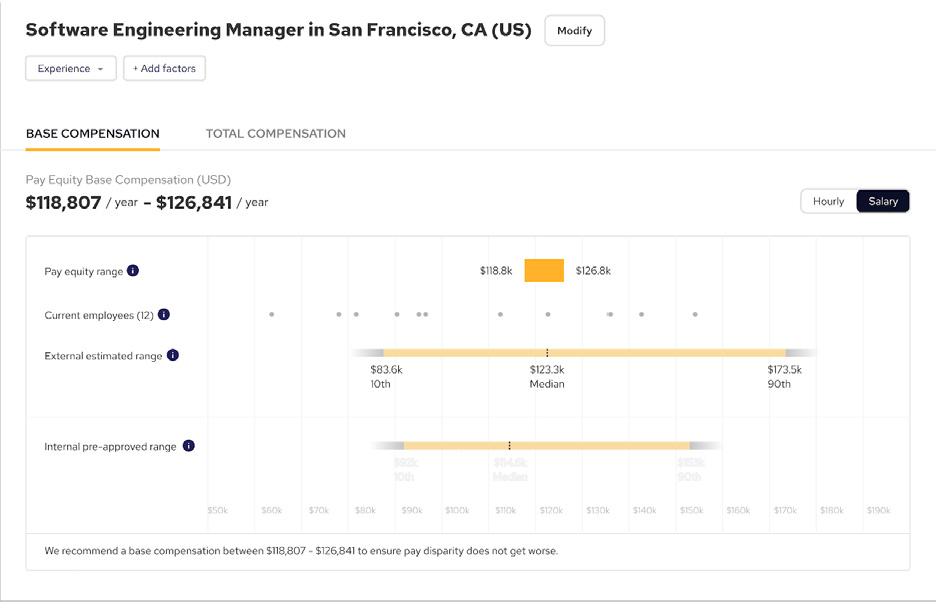
The Salary Range Finder solves pay compression because it takes into consideration your established pay ranges across all departments and lays the data against the evolving external market data. The result? An equitable pay range – every time.
To see how PayParity and the Salary Range Finder can help you retain talent and minimize pay compression, book a meeting with one of Trusaic’s pay equity experts.
Would you like to comment?
STATE OF THE INDUSTRY RESEARCH 38 ARTICLE


Stop Pay Inequity at the Source Equitable Salaries Simplified Salary Range FinderTM Achieve Pay Equity
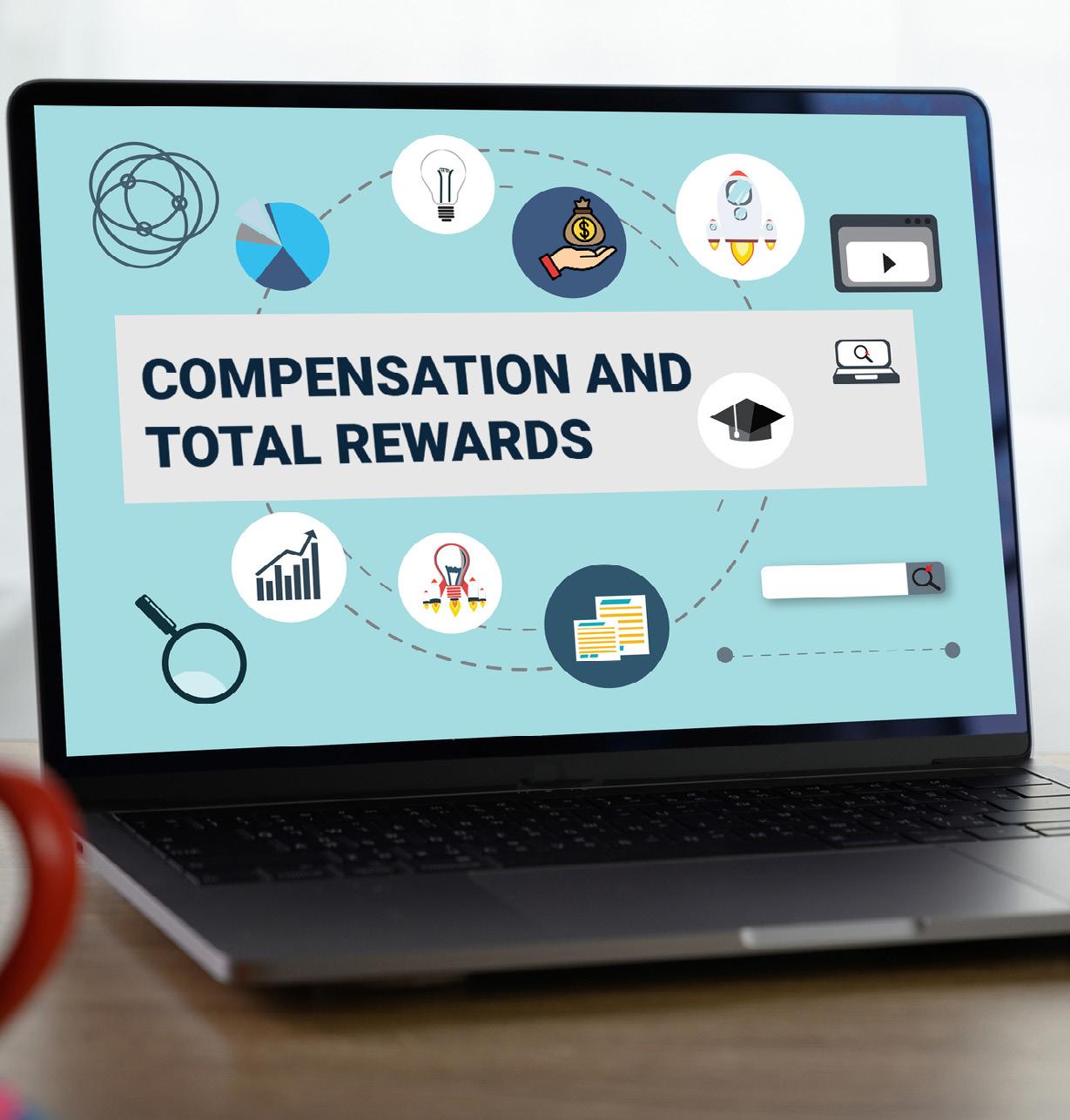
The Future of Compensation and Total Rewards 2022-23 Talent Management Excellence • January 2023 For more information: 1.877.472.6648 sales@hr.com www.HR.com/epubs The HR Research Institute tracks human resources trends and best practices. Learn more at hr.com/featuredresearch
Best-in-Class Education For All Your Learning And Training Needs
HR.com prepares HR leaders to be strategic business leaders by curating and delivering best-in-class products and services so you don’t have to waste time seeking out content on your own. We leverage technology and experience to provide you with customized solutions to best meet your professional development needs at every stage of your career.
From on-demand to cohort-based offerings, below is a listing of virtual courses that will challenge and empower you by giving you the tools to drive innovation and success in your organization.
Creating More Respectful Workplaces:
LGBTQ Employees
Increase your understanding of the LGBTQ+ community and improve company culture. An immersive, adaptive course to discover how to develop, implement and maintain an inclusive, safe and accepting workplace for LGBTQ+ individuals through policy, procedures and personal development.
Performance Management
Learn what every good manager does every day: makes sure employees know what they need to do to achieve the organization's goals, checks to make sure the employees are doing those things, praises employees for doing the right things, and uses constructive criticism when that is not the case.
Talent Management and Career Development
Introductory-level course covers the challenges and issues that organizations face in developing and retaining their employees.
Managing Remote Employees
Course explores the benefits and drawbacks of remote work and provides managers with tips for helping their employees stay connected and motivated.
Earn Great Respect, Build Strong Leadership Gain an understanding of the impact of Respect on working relationships and ability to influence others without intimidation to lead teams more effectively.
Gain access to more expert-led courses.
At HR.com, we are committed to educating and inspiring HR professionals and helping them build meaningful and impactful careers. With products and resources rooted in education, research, and leveraging cutting-edge technology, we help at every career stage - and over 1.92 million HR pros agree! (How could that many people be wrong?) By delivering best-in-class learning products, 250+ annual webcasts and 30+ world-class events, and innovative and thought-provoking research through the HR Research Institute, HR.com strives to inspire and strengthen workforces to change the world. HR.com also offers the most comprehensive HR certification exam preparation and guarantees a passing score on all SHRM and HRCI certification exams. Technology and experience drive our customized solutions that will help you become the best and most successful version of yourself.
Talent Management Excellence presented by HR.com JANUARY 2023 41
On-Demand Pay Benefits All Income Levels
Helping
employees work toward
financial wellness should be top of mind for HR professionals
By Brian Brinkley, QRails
American employees of all income levels are facing financial stress. A recent Gallup poll found respondents’ top concerns are paying their monthly bills, maintaining their standard of living, and doling out earnings for mortgage or rent.
Their financial worries are understandable, with inflation at 8.6%, a 40-year high, and nationwide gasoline prices hovering around $5 per gallon. Plus, short-term interest rates tripled their usual amount, hiked by 0.75%, which is the most the Fed has raised in 28 years.
These concerns trickle down into the workplace –employees in financial duress are not as productive or engaged as they could be. As such, human resource leaders should be on the hunt for innovative programs and solutions to help ease workers’ worries and support their financial journeys in productive ways.
This could include financial wellness programs that provide savings and spending planning advice. It could also incorporate a modern payment solution enabling employees access to their earned wages before a traditional payday.
In today’s on-demand society, the manner and frequency in which people are paid have not kept up with the times. This is something HR should strongly consider exploring and updating, as upgrading to a more flexible payroll process not only helps

employees’ financial health but helps employers attract and retain the best talent.
On-Demand Pay Benefits All Income Levels
Consider the financial struggles of many Americans:
● While the number of U.S. households that have access to a bank account has steadily risen in the last decade, approximately 5.4% of American households remain unbanked, according to the Federal Deposit Insurance Corporation’s (FDIC’s)
How America Banks: Household Use of Banking and Financial Services report. Further, while wages are rising across the United States, 61% of Americans live paycheck to paycheck.
Talent Management Excellence presented by HR.com JANUARY 2023 42 Submit Your Articles
TOP PICK
● Financial challenges are not just impacting lower-income earners. The February 2022 New Reality Check: The Paycheck-to-Paycheck Report found 42% of consumers earning more than $100,000 annually lived paycheck to paycheck in December 2021, an increase from 39% in May 2021. They are not only challenged to pay monthly bills but would have trouble covering an emergency expense of $400.
● PwC’s “Employee Financial Wellness Survey” found 63% of employees saying their financial stress has increased since the beginning of the pandemic. Among those with money-related anxiety, nearly half (49%) said their mental health has been adversely affected, including 41% citing on-the-job productivity challenges, along
with declining engagement and attendance. Further, 42% of this group is twice as likely to be looking for a new job.
Therefore, helping employees work toward financial wellness should be top of mind for HR professionals.

Today’s Earners Don’t Want to Wait for Payday
Financial freedom and flexibility are increasingly important for today’s consumers. The prevailing thought process for many is, ‘It’s my money, I earned it, so why is my employer holding onto it for two weeks or more?’ And technology and business processes have evolved to match today’s on-demand world – with the exception of payroll.
Talent Management Excellence presented by HR.com AUGUST 2022 43 Submit Your Articles
On-Demand Pay Benefits All Income Levels
People can click an app or swipe a card to get everything from a rideshare to a meal, yet many are still only paying their employees every two weeks.
One of the most common arguments for changing paycheck frequency is that the old system leaves workers financially frazzled. More regular payroll frequency provides employees with greater flexibility and control over their personal finances, allowing them to handle any unexpected expenses or jump on a limited-time discount on a purchase they have been planning without having to wait up to two weeks for payday to roll around.

However, earnings on demand, also known as on-demand pay or earned wage access (EWA), allows employees to access a portion of their pay right after working a shift, increasing their financial flexibility and wellness. Plus, it matches the needs of today’s on-demand world.
For employers, EWA eliminates the costs associated with payroll, such as printing and mailing checks. Better yet, it can help companies become an employer of choice by better attracting and retaining employees – standing out from the competition.
Equality of Pay, Regardless of the Amount Earned
EWA provides pay equity and an equal financial playing field. Whether available for banked, unbanked or low-, middle- or high-income earners, on-demand pay solutions help employees avoid stress for both everyday transactions and special occasions, such as purchasing tickets to a game or taking their family out for a celebratory meal.
In the near future, some on-demand solutions will enable peer-to-peer transfers, offer rewards and points like credit cards and enable companies to give out spot bonuses or load money allocated toward a certain perk. Workers can use such a bonus to purchase a seasonal gift, such as a Thanksgiving turkey from their employer. Further out, we might even see EWA replace conventional banking.
Get in Tune with the Modern Way to Pay
The benefits of on-demand pay in an on-demand world are undeniable. Financial stress due to inflation and rising prices is prevalent among hourly and salaried employees. Gaining access to their pay immediately after working – and without having to wait for payday – can help employees tackle their bills and get one step closer to financial flexibility and freedom. In addition, EWA decreases employers’ costs associated with payroll, enables them to provide a much-desired benefit to help attract and retain top talent, and is often available at no cost to employers or employees.
The payment technology is there – it just has not caught up as quickly as other on-demand solutions like Uber, DoorDash and PayPal. So, if you are an HR leader who is interested in doing away with antiquated payroll cycles and getting in tune with the times, EWA is the way to pay today.
Would you like to comment?
Talent Management Excellence presented by HR.com JANUARY 2023 44 Submit Your Articles
Brian Brinkley is the CEO of QRails
On-Demand Pay Benefits All Income Levels
Everyone’s Talking About Problems In The Workforce, But No One’s Discussing The Solution That’s Right In Front Of Us
The far-reaching advantages of flexible work
By Kevin Akeroyd, Magnit
Everywhere I look, business leaders and analysts are lamenting the shallow hiring pools American businesses are facing. At the same time, a looming recession has news of layoffs at high-profile tech companies rippling across the country as cost-saving measures become the guiding light in certain industries. Then, there’s the “loyalty crisis,” which is seeing full-time employees sticking around for less time than in previous eras. Further complicating the issue is unemployment, which is sitting at just 3.7%, despite ongoing cries that “no one wants to work.”
The thread that connects these seemingly paradoxical talking points is a temptation to place the blame for workforce woes elsewhere. It’s the economic climate or a lack of employee loyalty or laziness or something else. It’s not me—it’s not my business. The desire is understandable, but to take this view ignores the very real shifts in the labor market that are happening before our eyes.
While it’s true that companies are finding it challenging to attract and keep top talent, the idea
that a lack of quality candidates is to blame is a myth. No, the issue is not that workers have changed—it’s that employers haven’t. For workers already yearning for a change of pace, Covid-19 offered an opportunity to reevaluate priorities. Now, businesses must do the same. Where yesterday’s workers valued stability above all else, today’s crave freedom and flexibility when choosing roles. That’s a lead that businesses would do well to follow when developing their total talent strategy, and I don’t just mean by offering work-from-home options.
Today’s workers are looking for a different experience from their workplaces. They are pursuing careers at companies that value their unique skill sets, and they want the freedom to use those skills to advance innovative products, services, and brands. Sometimes, that means foregoing tenure in favor of something that excites them, and they’re happy to do it. To fulfill these new career priorities, American workers are turning to flexible work arrangements (e.g., contingent roles, freelance opportunities, and contracted positions) in droves, and most employers aren’t keeping up.
Talent Management Excellence presented by HR.com JANUARY 2023 45 Submit Your Articles
The Far-Reaching Advantages of Flexible Work
Once regarded as a consolation prize to landing a full-time role, flexible positions are becoming more desirable to workers looking to align their lifestyle with their passions. A 2022 report by the Future of Work Exchange found that 47% of the American workforce is contingent, and that number is growing. This workforce is comprised of highly skilled, experienced professionals who choose to take on short-term assignments because their talents allow them to do so. Whether these employees are looking to take time off between jobs, work for themselves as a contractor or consultant, spend more time with their families, or simply want to stay in their hometowns while getting to work for a top company, the desire to use their talents on their terms remains a constant.

Embracing a flexible workforce isn’t just good for employees. It can also help companies win the war for talent while streamlining teams for optimal efficiency. Just as these arrangements provide flexibility for workers, they give employers the freedom to change course if needed. They are agile and flexible, making them easy to scale as a company’s needs change.
Some businesses have been leveraging the power of extended workforces for decades. Tech industry giants like Meta, Google, and Amazon have been utilizing extended workforces for some time now and reaping significant rewards for their willingness to push for a more innovative approach to recruitment.
They’ve embraced the extended workforce and posted record profits while doing it.
My company, Magnit™, has seen this increased investment from our client base first-hand. Our five most prominent tech clients all expanded their existing contingent work programs in 2022 and grew their diversity spending by 34.6% during that time. Furthermore, our client’s overall spending on contingent workforce programs across industries has more than doubled over the past year, growing from $11 billion to $23 billion. It’s clear that companies that explore this option see its benefits.
So, if professionals are waking up to the benefits of taking on limited contracts, and some of the biggest companies in the world are too, why aren’t all employers? Because they think it’s easier to stick with the status quo.
They’re not wrong, of course. Doing nothing is always easier than doing something — but complacency comes at a cost. In this case, the costs of continuing as usual will add up fast in the form of lost opportunities. With contingent workforce growth likely to continue into the coming decades, employers must now realize that, soon, their “contingent employees” will just be their “employees.” Those who resist the evolution of the workforce at this crucial juncture will find themselves unable to compete sooner rather than later.
Kevin Akeroyd serves as Magnit’s Chief Executive Officer and leads the vision and strategy for the company. He is recognized as one of the technology industry’s most tenured and trusted experts. Kevin has held executive leadership roles at some of the world’s most notable brands that were category leaders in Cloud Software, Services and Data.
Would you like to comment?

Talent Management Excellence
HR.com JANUARY 2023 46 Submit Your Articles
presented by
Everyone’s Talking About Problems In The Workforce, But No One’s Discussing The Solution That’s Right In Front Of Us
Three Reasons Why CFOs Must Focus On People In 2023
Companies need to plan ahead and invest wisely in their people
By Ian Cook, Visier
As we begin a new year, there are plenty of factors that will demand the attention of a chief financial officer. With all factors pointing toward an economic slowdown and potential recession, cost-cutting measures will certainly be top of mind for most businesses looking to weather the storm.
Traditionally, headcount is often one of the first line items to be critically assessed during these times, but there’s more to consider than just numbers when looking at people. In fact, there are three key elements that a CFO must take into consideration when dealing with people in 2023.

Labor Remains in Short Supply
In 2020, “intangibles,” or non-physical assets, accounted for 90% of the S&P 500’s market value. This is up from 17% in 1975 and is driven by the gradual shift toward a services economy — an
economy reliant on the skills, knowledge, and commitment of its workforce.
While we often think of a recession playing a role in a downward shift in job openings, this year there is a significant difference. Despite the attention-grabbing headlines of widespread layoffs, people are increasingly scarce. According to
the U.S. Bureau of Labor Statistics, over four million employees each month leave their jobs, and there are still nearly two open roles for every available worker. Anyone that believed this would change has been proven wrong, and it will continue to be the case for the long term. The worldwide talent shortage is forecast to be 85 million people by 2030.
Talent Management Excellence presented by HR.com JANUARY 2023 47 Submit Your Articles
TOP PICK
Companies need to plan ahead and invest wisely in their people to meet their near-, medium- and long-term needs for people or run the risk of having critical gaps in their organization.

Investors Care About People Strategies
To put it plainly, people are on investors’ radars. According to Larry Fink, the CEO of BlackRock, “Turnover drives up expenses, drives down productivity, and erodes culture and corporate memory.” People metrics are becoming increasingly more important for both institutional and retail investors, and the CFO is going to have to reckon with the demands of reporting on not only cost measures like headcount planning but also diversity, equity, inclusion and belonging (DEIB) initiatives that prove an organization is living up to their corporate social responsibility policies.

This isn’t just conjectured either. New regulations from the SEC
and EU have placed an increased focus on the people aspects of business, and while both are still relatively new, organizations can expect to see more and more structure put around the reporting policies and what is expected.
Financial Impacts on People Are Nuanced
It’s easy to understand the expense put toward labor but much harder to understand the investment and bottom line impact. What we do know is that people directly impact the bottom line. Research by BlackRock shows how resignations impact return on assets. Another study in the Harvard Business Review identified that time in role (experience) accounted for up to a 50% increase in sales.
We’ve also seen statistically significant evidence that turnover, or layoffs, impact multiple areas of the business such as internal communication, burnout, creativity, performance, job satisfaction, and more.
Simply put, people are far more nuanced than just an expense item, and with elevated levels of stress during times of inflation and a recession, businesses are going to need to be proactive in retaining staff and maintaining employee well-being, not just for the benefit of the employees but for the sake of the bottom line.
CFOs know they need to focus their skills and attention on the areas which will most significantly impact business returns. For the last 20 years, this has meant an obsession with customers. For the next 20 years, people and the workforce will demand this level of focus and investment.
Ian Cook has spent his 20+ year career building business success through people. He started and scaled three companies and a not-for-profit as well as consulted to a host of Fortune 100 companies. What distinguishes Cook and makes him sought-after as a speaker, adviser and executive leader is his ability to link the human side of the business to the core drivers of operations and finance. His expertise is accessed daily by thousands of executives who are working to build business success through their people.
Would you like to comment?
Talent Management Excellence presented by HR.com JANUARY 2023 48 Submit Your Articles
Reasons Why CFOs Must Focus On People In 2023
Three
10 Reasons Why Focusing On Equality Is Crucial In 2023
Change the trajectory for the working year ahead
By Thom Dennis, Serenity in Leadership
Check out why a renewed emphasis on equality can help culture and the bottom line in 2023.
1. Equality Is Access To A Level Playing Field
Offering a wide range of opportunities, training and promotions so everyone has the same rights, prospects and status regardless of age, gender, race, sexual orientation, disability, religion, language and any other kind of social difference, results in fulfilling purpose and objectives. It also, when combined with an acceptance of the inevitability of personal bias, creates a productive team whose members feel they have a positive future ahead of them.
2. Equality Is Looking In The Mirror
Following a turbulent, expensive, and divisive year for many, it would be possible to look to 2023 with some degree of despondency but taking positive measures to create equality in the workplace could change the narrative of your business and change the trajectory for the working year ahead.
What’s more, becoming a pioneer for equality may go beyond your own employees and have a knock-on effect on those around you, such as your alliances, stakeholders, clients and consumers.
Taking a step back to see the business in the way you are projecting it to those looking in is an essential exercise in reflection. What does your website look like? Could the language you are using actively exclude a particular group? Do you have an overt declaration of your equality policies? If not, why not? If so, is there congruence between your promises and your practice? Focusing on equality helps us improve our language, recruitment, work culture, and then our profit margin.
Talent Management Excellence presented by HR.com JANUARY 2023 49 Submit Your Articles
3. Equality Is Valuing Your People
Yes, they really are your greatest assets. If your workplace is one that accommodates the needs of any worker who feels like they are a minority you will want them to know their beliefs and needs are understood. For example, introducing a multi-faith prayer room, or space for quiet and reflection that employees can use freely during a break means making it known to your employees that they are respected and heard.
4. Equality Results In Equity

Equity comes from a place of ensuring fairness. The most obvious example is fair pay, which is a mutually acceptable exchange for skill, experience and commitment and should not be affected by any social differences between us. It is important to regularly review whether groups who commonly encounter pay discrimination are being paid fairly.

5. Equality Means Protection
An equal workplace means that there should be no room for discrimination of any sort. Integrating real safeguarding and protection policies for employees to




easily and freely report any incidents that may occur, and being responsive and taking meaningful action is fundamental to combatting any hidden prejudice and systemic issues.

6. Equality Means Being Proactive
It is important to not become complacent with policies that have been in place for a number of years. Although the intentions behind policies and programs may have initially been sound, businesses need to stay agile and be ready to adapt or change. We saw the impact of Covid-19 on better flexibility for working from home. Stay ahead by remaining open and continually reviewing policies and strategies.
7. Equality Provides A Voice
Gaining a clear understanding of your employee’s experience means pursuing regular, open communication about all aspects of diversity and inclusion, and welcoming constructive criticism. By giving workers the opportunity to ask questions or provide feedback, not only do you gain an account of the genuine experience of your employees, but you also ensure a culture of autonomy and freedom to be heard.





Talent Management Excellence presented by HR.com JANUARY 2023 50 Submit Your Articles
10 Reasons Why Focusing On Equality Is Crucial In 2023
8. Equality Means Accessibility
Expecting individuals to have identical requirements and goals results in a lack of diversity. Creating accessible workspaces instantly opens doors for individuals who face any sort of disability and neurodiversity and enables them to bring all they offer to the table. Offering remote working opportunities as well as creating a practical accessible space, for example, by installing ramps for wheelchair users, or offering a quiet alternative for those with sound-sensitive needs, are ways of showing that your business actively values equality and inclusion.
9. Equality Means Keeping Up To Date With Science and Current Thinking
The social demands for the acceptance of trans people is now an important part of being inclusive. Racial justice is another move that is more than a trend, while increasingly one focus is on the effects on women going through menopause at work.
10. Equality Enables Flexibility
Flexibility is necessary if you are to accommodate a diverse group of workers with varying needs,
particularly those raising a family alongside their career. Penalizing someone for having a family and forcing them to choose between their loved ones and work results in a loss of trust, and likely valuable talent.

With an MSc in Change Agent Skills & Strategies, skills as an NLP Master Practitioner, 17 years of experience as an officer in the Royal Marines, and having worked extensively around the world, Thom Dennis brings all his experience together as a facilitator, speaker, consultant, educator and change agent as CEO of Serenity in Leadership. For the last 30 years, his career has been dedicated to facilitating transformation through organizational change.
Would you like to comment?
Talent Management Excellence presented by HR.com JANUARY 2023 51 Submit Your Articles
10 Reasons Why Focusing On Equality Is Crucial In 2023
HRCI® & SHRM® CERTIFICATION PREP COURSES
GROUP RATES AVAILABLE
For HR Professionals
Show that management values the importance of the HR function, and has a commitment to development and improvement of HR staff.
Ensure that each person in your HR department has a standard and consistent understanding of policies, procedures, and regulations.
Place your HR team in a certification program as a rewarding team building achievement.
For Your Organization
Certified HR professionals help companies avoid risk by understanding compliance, laws, and regulations to properly manage your workforce.
HR Professionals lead employee engagement and development programs saving the company money through lower turnover and greater productivity and engagement.
A skilled HR professional can track important KPIs for the organization to make a major impact on strategic decisions and objectives, including: succession planning, staffing, and forecasting.
HR.com/prepcourse CALL TODAY TO FIND OUT MORE 1.877.472.6648 ext.
|
3
sales@hr.com
1 Less expensive than a masters or PhD program, and very manageable to prepare with flexible study options. 2. Recertification - ensures HR professionals continue to be up to speed on the latest legislation and best practices 3. Recognized, Industry benchmark, held by 500,000+ HR Professionals We offer group rates for teams of 5+ or more for our regularly scheduled PHR/SPHR/ SHRM or aPHR courses.
For groups of 12+, we can design a more customized experience that meets your organization’s needs. You can have scheduling flexibility in terms of the days, times, and overall length of the course.
Groups rates for HRCI exams are also available as an add-on.
All group purchases come with 1 year of HR Prime membership for each attendee to gain the tools and updates needed to stay informed and compliant.

Why Certification is the Best Choice:
CALL TODAY TO FIND OUT MORE 1.877.472.6648 ext. 3
sales@hr.com | HR.com/prepcourse Group
2
|
Rate Options 1
3
Workers’ Comp For Digital Nomads
Are you legally required to provide
comp coverage for digital nomads?
By Craig Shapiro, Cerity
With the rise of remote working and the opportunities it brings for living with more flexibility, telecommuters are enjoying working from their homes, favorite coffee shops, or anywhere else they may fancy. Digital nomads, many of whom consider themselves to be the future of remote working, are even taking to planes, trains, and automobiles in order to work from wherever they please.
With this increase in telecommuting, businesses face unique challenges regarding how they handle everything from company policies to business insurance. Whether you’re a remote worker yourself or you employ remote workers who wish to travel, you likely have many questions about workers’ comp for digital nomads.
Here, we’ll break it down and help you understand the laws and circumstances that dictate how workers’ comp covers digital nomads.
What Are Digital Nomads?
First, let’s talk about what distinguishes digital nomads from other telecommuters. Unlike remote workers who primarily work from home in a home office, digital nomads work from various places at various times in their career. Whether they’re traveling around the globe, road-tripping across the United States, or office-hopping to various co-working spaces
workers’
in their home city, digital nomads are usually more flexible and independent in how and where they work.
Many digital nomads are freelancers or independent contractors. Others may be employed full-time by companies that are open to a more flexible working experience.
Workers’ Comp for Digital Nomads
If your office is on the beach, what role does workers’ comp insurance play in your working life? As a business owner who employs remote employees, are you legally required to provide workers’ comp coverage for them? These are important questions for both digital nomads and the companies that employ them. Workers need to know if they’re covered, and business owners need to know if they should provide coverage and what, if any, liabilities they face with having a digital nomad on their payroll.
The answer to these questions lies in how an employee is categorized at the company. If an employee is classified as an independent contractor or freelancer, or, in other words, is not considered an official employee, then it generally falls on the employee to provide their own workers’ compensation insurance. This is similar to how freelancers and independent contractors are responsible for paying their own taxes, social security, pension, and other benefits. Although state laws may vary regarding how businesses treat independent contractors and freelancers, this is the case for most states.
Talent Management Excellence presented by HR.com JANUARY 2023 54 Submit Your Articles
TOP PICK
If an employee is classified as an employee, however, the laws of the state that the business operates in will determine whether or not the business must provide workers’ comp insurance. If you own a business and your state law finds digital nomads to be employees eligible for workers’ compensation, you must pay for insurance coverage for all qualifying employees.
Digital nomads who are employees and are required by state law to be covered by workers’ compensation can run into an additional challenge: workers’ compensation only covers work-related duties and the line between personal time and work time can become blurred for digital nomads.

For example, what happens if a digital nomad is working on the beach and during the course of a busy day sustains back injuries due to hours at the laptop? In this case, workers’ compensation would likely cover the injury because it was work-related, even though it happened at the beach. If, on the other hand, a digital nomad working as a copywriter was taking a break at their hotel gym and got injured on the treadmill, this would not be covered, because the worker was not engaged in work activities.
What if a digital worker is working at a coffee shop and spills coffee on themselves, causing burn injuries? This is a gray area.
In fact, there are many gray areas with digital nomads and workers’ compensation, and in these situations, it may take negotiation or even taking a claim to court to determine whether the worker is eligible for benefits. It can be hard for workers to prove they were actively working when an injury took place and not taking a break, for example. There may not be witnesses who can determine if an injury happened in the course of work duties and it may be up to the worker to provide evidence that their injury was caused by work, whether they were injured when biking to a client meeting, suffered an injury on a plane while working on a laptop, or otherwise were injured in this type of “gray area” incident.
Craig Shapiro is Vice President, Product & Underwriting for Cerity, a workers’ compensation insurance provider founded with a bold vision to reimagine small- to medium-sized business insurance. Would you like to comment?

Talent Management Excellence presented by HR.com JANUARY 2023 55 Submit Your Articles
Workers’ Comp For Digital Nomads

ePublication EditorialCalendar2023 Checkoutthenewandupcomingthemed HRtopicsinTalentManagementExcellence. Check ePublications Editorial Calendar Here. Would you like to submit an article? | Write to us at ePubEditors@hr.com Submission Guidelines 1 The Future of Workplace Trends Feb 2023 2 Succession Planning Mar 2023 2 The Future of Diversity, Equity, Inclusion and Belonging Apr 2023 3 Successful Talent Management Strategies from Hire to Retire May 2023 4 Internal Mobility and Career Development Jun 2023
HR Memo To Professionals: Build A Professional Network
3 ways HR managers can describe how a professional network can be an

essential help
By Shawn Herrera, Pepperdine Graziadio Business School
Despite recent news of layoffs at U.S. firms, the job market remains robust, and it is changing the traditional career path. Recent U.S. Bureau of Labor Statistics data shows the acceleration of wages continues to increase, and the number of people who either are working or want a job has continued is dropping. Despite this, there is a countertrend of professionals who quit their job and later say they regret their hasty exit. According to a poll released in September 2022, one in four U.S. workers who quit their previous job regrets their decision.
The Great Resignation raises questions about why people quit and how they quit. Some people report being inspired by peers who quit their jobs, saying it gave them the confidence they previously lacked to make a move themselves. Some jump
ship for a higher wage without much thought at all about other factors. Others are simply burned out, lonely, experiencing family stress, and desire some time off before starting their next chapter. Research from Gallup states that “50% of employees have left a job to get away from a [bad] manager at some point in their career.”
Whatever the reason, HR managers play a role in guiding
employees through leave-or-stay job scenarios. While the urge for a quick, clean break may be appealing, HR managers can curb that urge by reaffirming employees and encouraging them to consider moving up within their existing employer. Encouraging employees to build a solid professional network builds credibility for HR managers, helps employees and could benefit the business.
Talent Management Excellence presented by HR.com JANUARY 2023 57 Submit Your Articles
For those who want to move up with an existing employer, building and leveraging a professional network can be the difference between a smooth transition or a misstep on the career ladder. Some will climb a career ladder only to later realize their chosen ladder was leaning against the wrong wall. Professional networks can consist of company peers, mentors, and sponsors. Each plays a different, but equally valuable, role.
Here are three ways HR managers can describe how a professional network can be an essential help:

1) Look Before You Leap
Wise job changers who seek to stay and move up draw on the advice of others before making the switch in order to affirm or
reconsider their decision. An employee’s professional network can help clear up questions about whether the workplace culture, compensation package, and growth opportunities at your current position are worth the added responsibility and future growth. They can also advise on ways to develop additional skills or if an advanced degree might assist you to move up your current career ladder or pivoting to a different area. Connecting with professionals in a network can also challenge assumptions about the prospective position that may not be as they seem. More than just making your work not enjoyable, choosing the wrong workplace, and/or boss, can be hazardous to your health. According to the Mayo Clinic, “your supervisor is more
important to your health than your family doctor.”
2) Get the Inside Scoop
Friends and family, social media platforms such as LinkedIn and Glassdoor, past colleagues and peers, can all serve as insiders to aid in switching jobs. From my vantage point of working at Pepperdine Graziadio Business School, I’ve seen great career matchmaking sparked when students leverage classmate relationships, faculty relationships, and their alumni network. Before making a hasty move, it is wise to learn first-hand if the desired position (& supervisor) offers opportunities for long-term growth, higher salary potential, and better benefits than are possible with your current position.
Talent Management Excellence presented by HR.com JANUARY 2023 58 Submit Your Articles
HR Memo To Professionals: Build A Professional Network
3) Do a Deep Dive with Your Current Employer
Many companies may offer lateral movements. There may be promotional opportunities that are not widely advertised. Even better, with your insider knowledge of your current employer, you may be able to discover new opportunities for your company. These may be prime opportunities in which you are best qualified to provide growth, and which could create a new role for yourself. Often a direct conversation with a direct manager can help bring about desired change whether it be a
new role, greater responsibility, or more flexibility. While moving on may seem desirable, it is worth exploring whether an existing employer has a well-suited, unfilled position creating a win-win scenario. This may open doors to existing opportunities, or create new ones, without having to join the Great Resignation. “The grass is not always greener on the other side of the fence, but it is almost always greener where you water it.”
To be certain, tapping a professional network should
be one part of the job switch process. Professionals need to consider their long-term financial and personal goals, where they want to live, the impact that a job change may have on their family and other personal pursuits, and most importantly, the impact on their health.
Overall, speaking with your peers, mentors, and sponsors is a time-tested method for breaking through a cluttered and churning job marketplace. It is critical to building a network throughout an entire career, not only after you realize you need it.

In addition to the better version of themselves, they become while earning their degree, one of the main reasons professionals consider earning an MBA is to enhance their professional network. A network that will pay dividends for their entire career. With a solid network in place, professionals are better positioned to make a job switch that enhances their career and HR managers can look like helpful advisors.

Talent Management Excellence presented by HR.com JANUARY 2023 59 Submit Your Articles
HR Memo To
Network
Shawn Herrera is a Practitioner Faculty of Applied Behavioral Science (ABS) & Organization Theory and Management (OTM), in addition to being Director of Corporate Relations, at Pepperdine Graziadio Business School in Los Angeles, CA. Would you like to comment?
Professionals: Build A Professional
Thank you for partnering with us!
Paycom (NYSE:PAYC) offers cloud-based human capital management software to help businesses streamline employment processes, from recruitment to retirement. With a robust suite of products including payroll, time and labor management.


THANK YOU
Designing better ways to work by providing cutting-edge products and exceptional experiences within HR, Talent, Time Management, Benefits and Payroll.

 LEARN MORE
LEARN MORE
LEARN MORE
LEARN MORE
LEARN MORE
LEARN MORE
PARTNER WITH US
VIRTUAL EVENTS
WEBCASTS
January
February 22, 2023
January
February
EVENTS & HR.COM WEBCASTS UPCOMING
our Upcoming Webcasts Schedule and Register Today!
Register
Ideas and Tools
Effective Performance Management
VIRTUAL
www.hr.com/upcoming_webcasts www.hr.com/virtualconferences View
View our Upcoming Virtual Conference Schedule and
Today! New
for
REGISTER
Workplace
REGISTER
Minimum Wage Rates and
They
Your Business
31, 2023
The State of Human Experience in the
February 15-16, 2023
Rising
How
May Impact
REGISTER
January 24, 2023 11:00 AM - 12:00 PM ET
Leadership Succession Made Simple: Do it right and do it (much) faster.
REGISTER
31, 2023 12:00 PM - 1:00 PM ET
Building an Onboarding and Learning and Development Program for a Growing Company
REGISTER
January 25, 2023 06:30 AM - 07:15 AM ET
Pick the Low Hanging Fruit. A Tip To Be Successful on the HRCI & SHRM Exams.
REGISTER
9, 2023 12:00 PM - 12:30 PM ET
The Future of Upskilling and Employee Learning
REGISTER
13
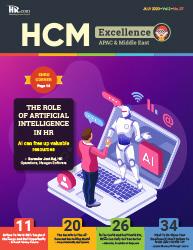
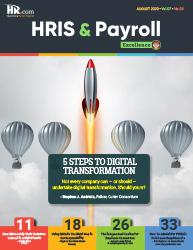
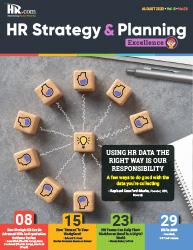
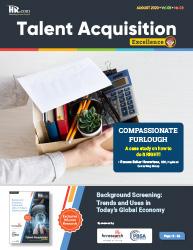

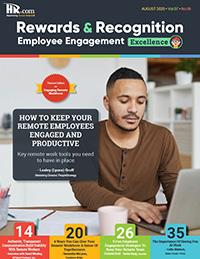
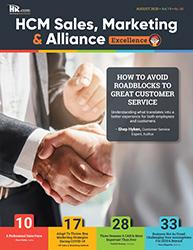
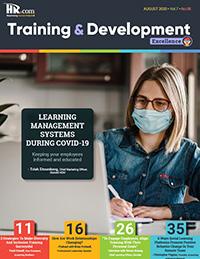
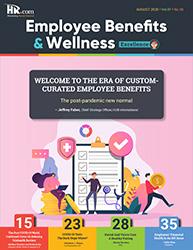
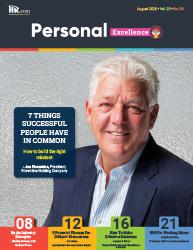


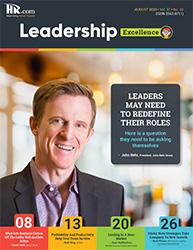
Publications
Targeted
Your
Informing, Educating, Enlightening and Assisting HR professionals in their personal and professional development, the Excellence series offers high-quality content through the publications! Like to submit an article? Use our online submission form or for more information go to www.hr.com/ExcellencePublications
Publications to Reach
Audience























































 Babitha Balakrishnan Editor, Talent Management Excellence
Babitha Balakrishnan Editor, Talent Management Excellence
















 Ryan Gottfredson, Ph.D.
Ryan Gottfredson, Ph.D.
 By Jesse Meschuk, Exequity
By Jesse Meschuk, Exequity

































 AUTHOR: SEAN LUITJENS
AUTHOR: SEAN LUITJENS















































 LEARN MORE
LEARN MORE
LEARN MORE
LEARN MORE
LEARN MORE
LEARN MORE












